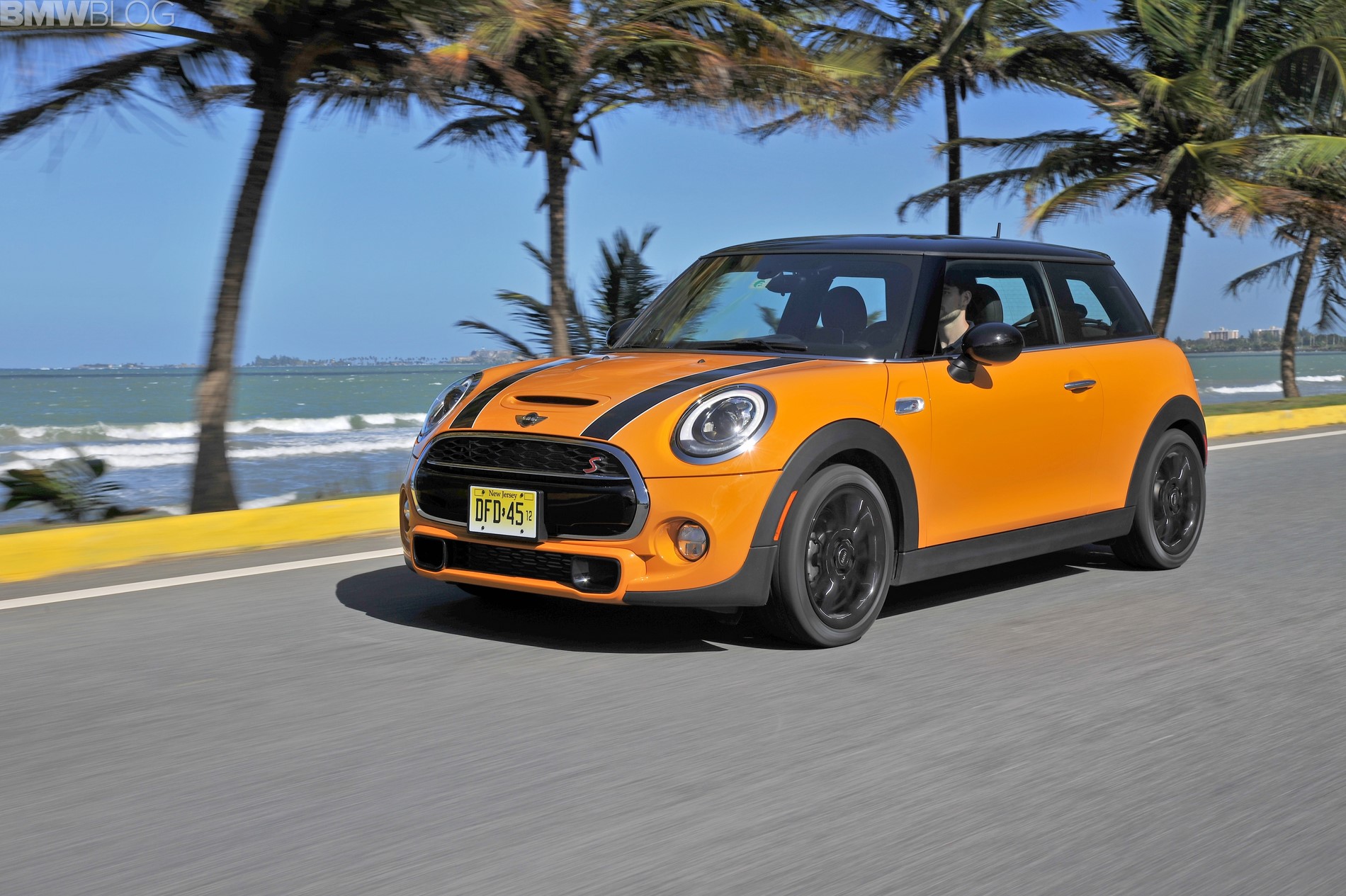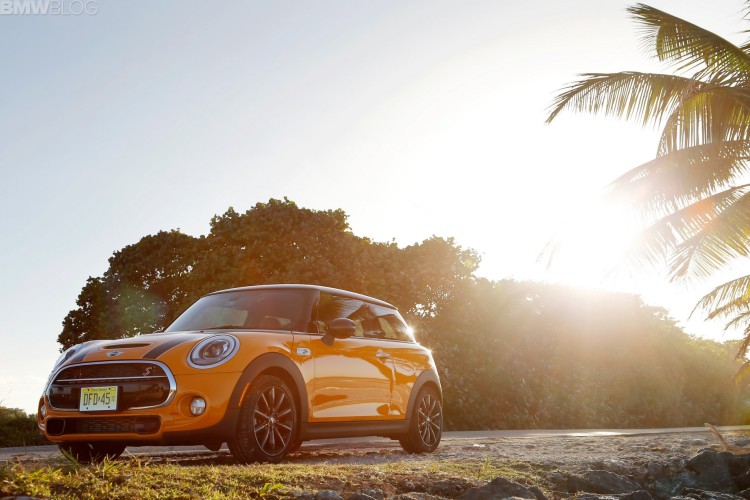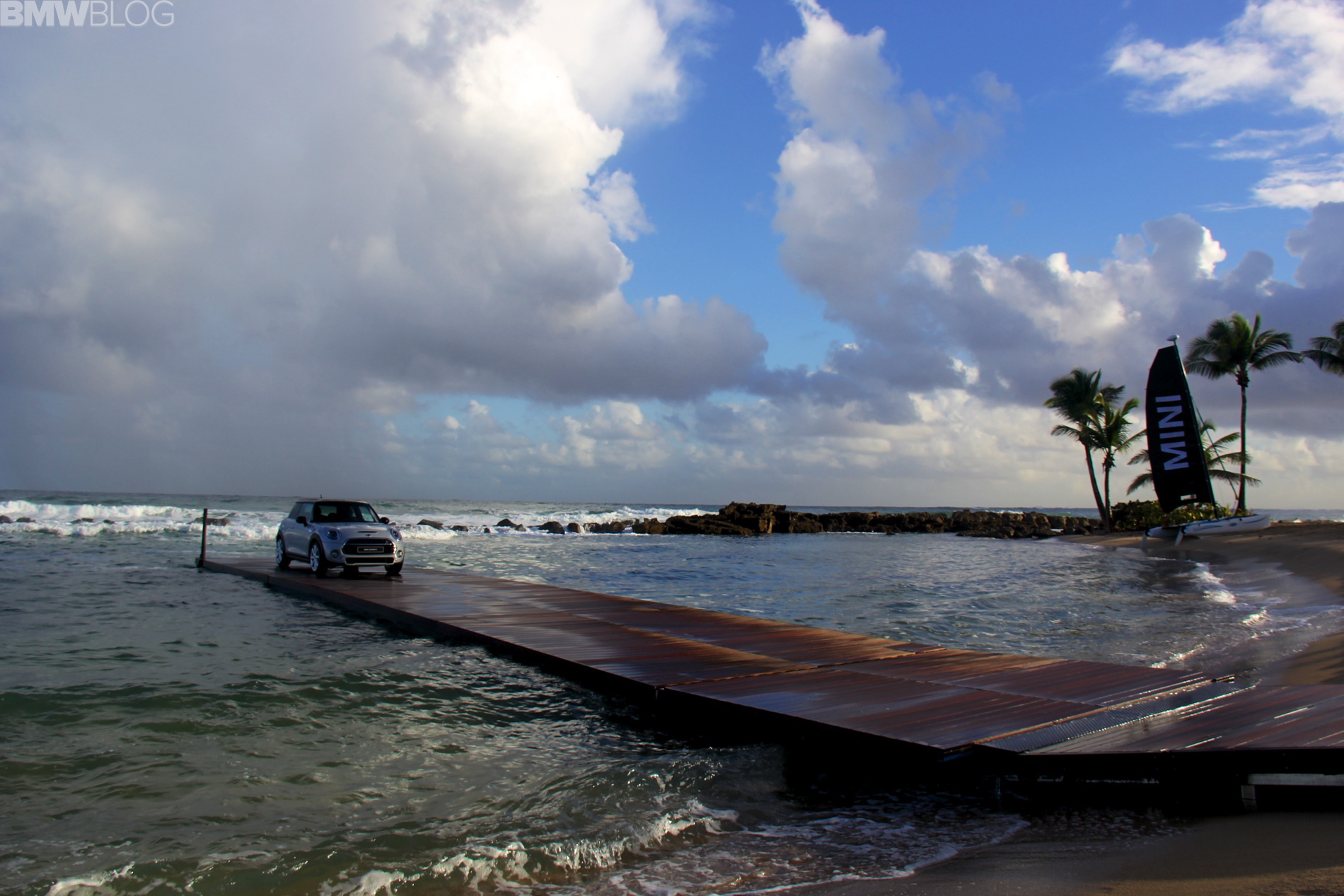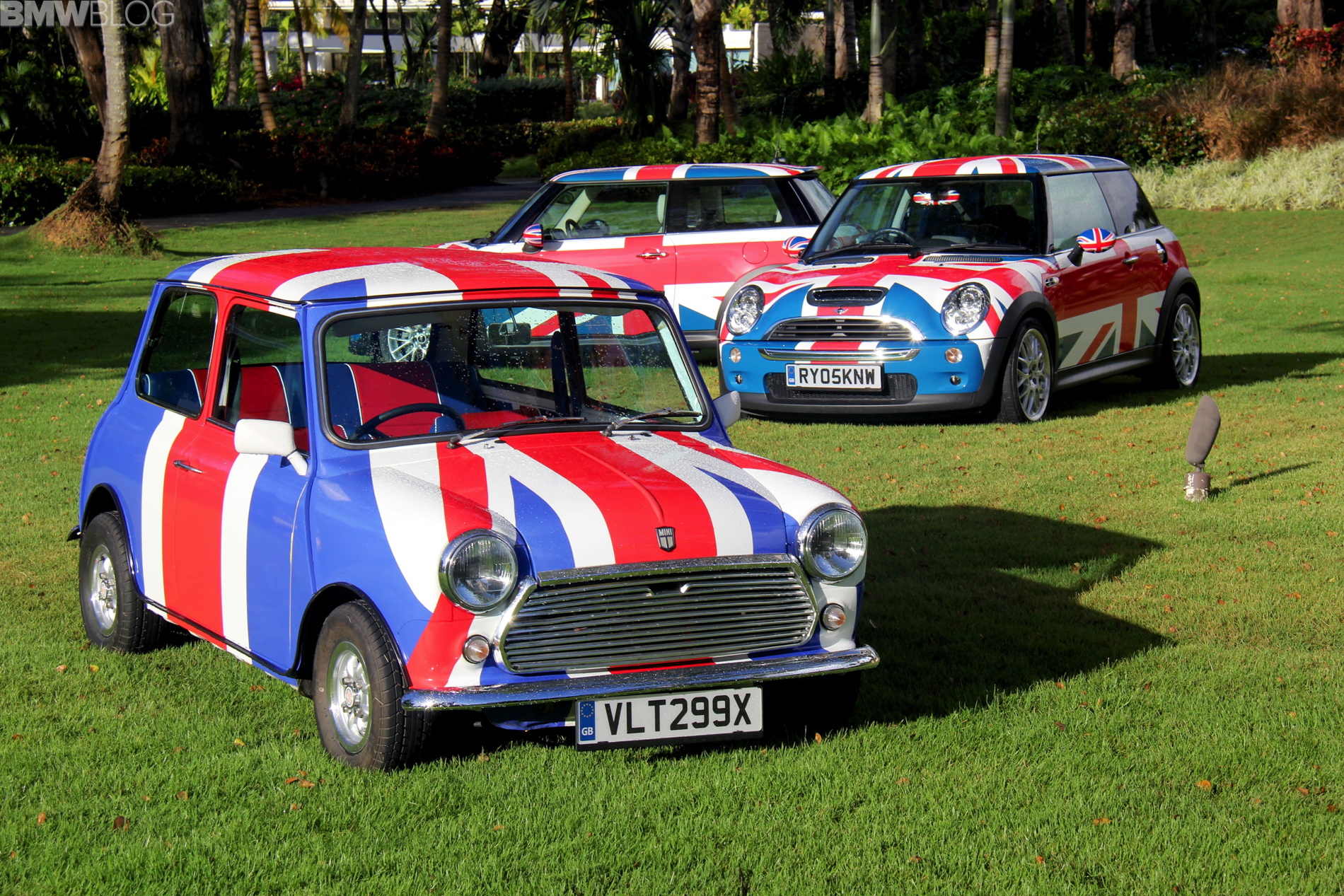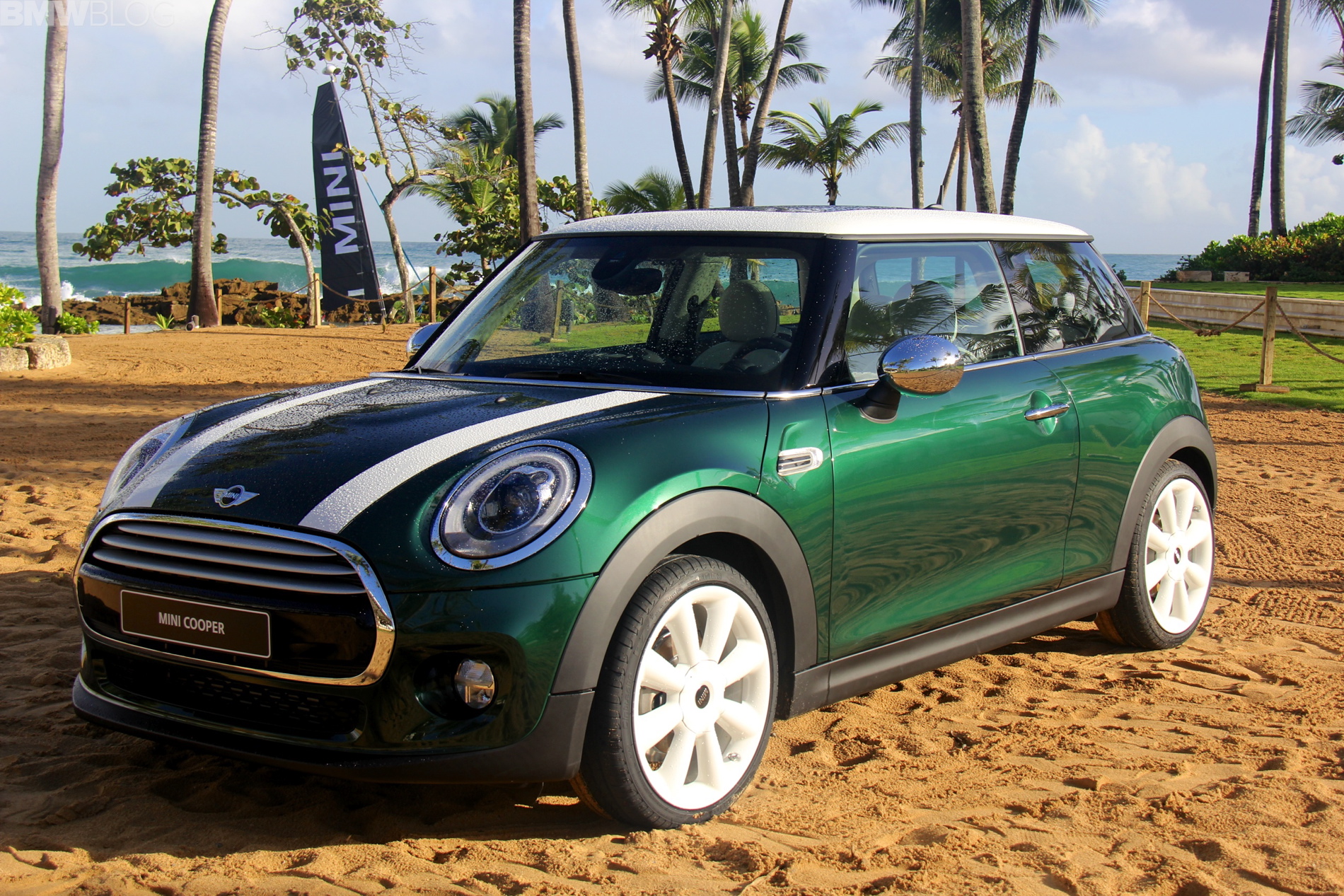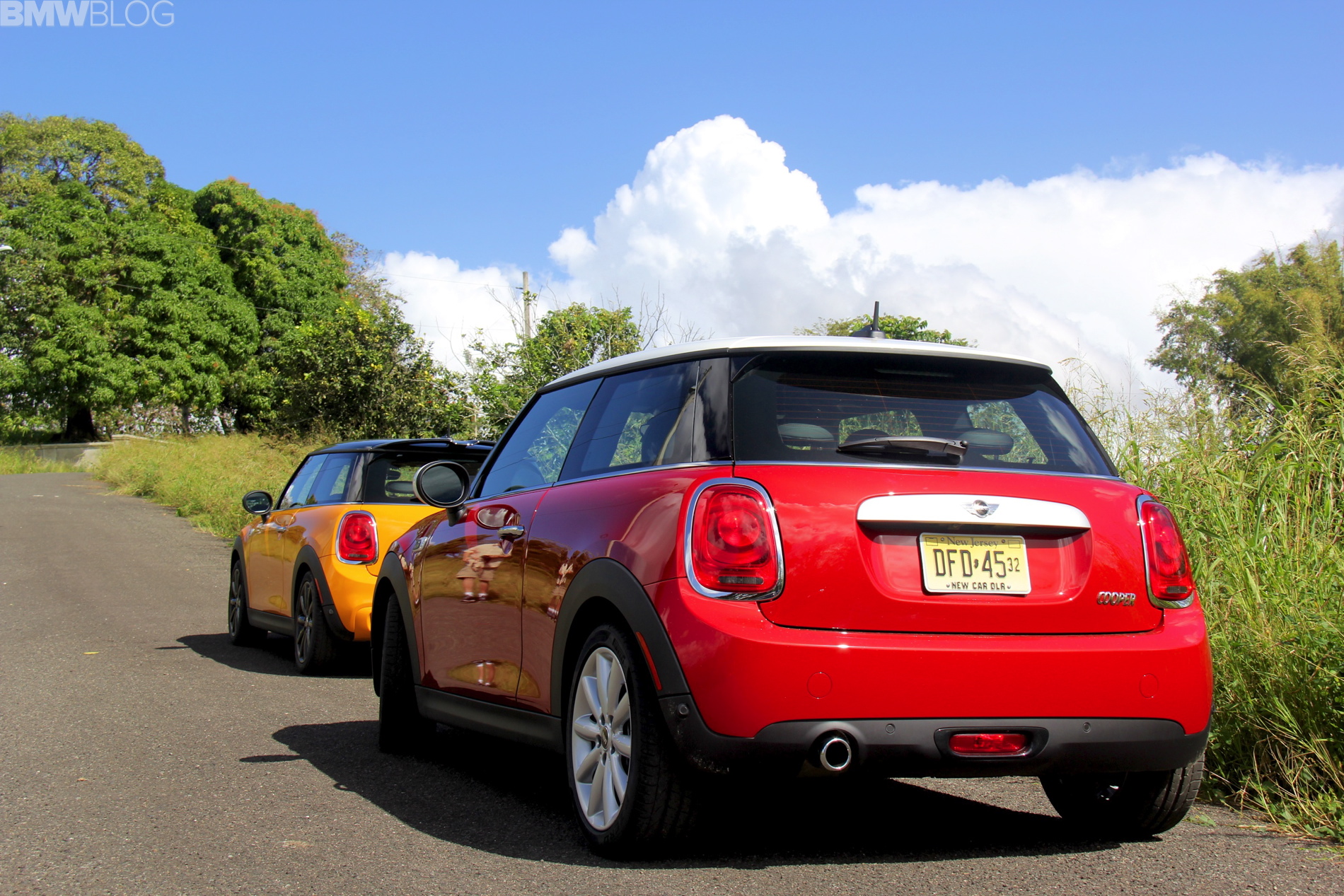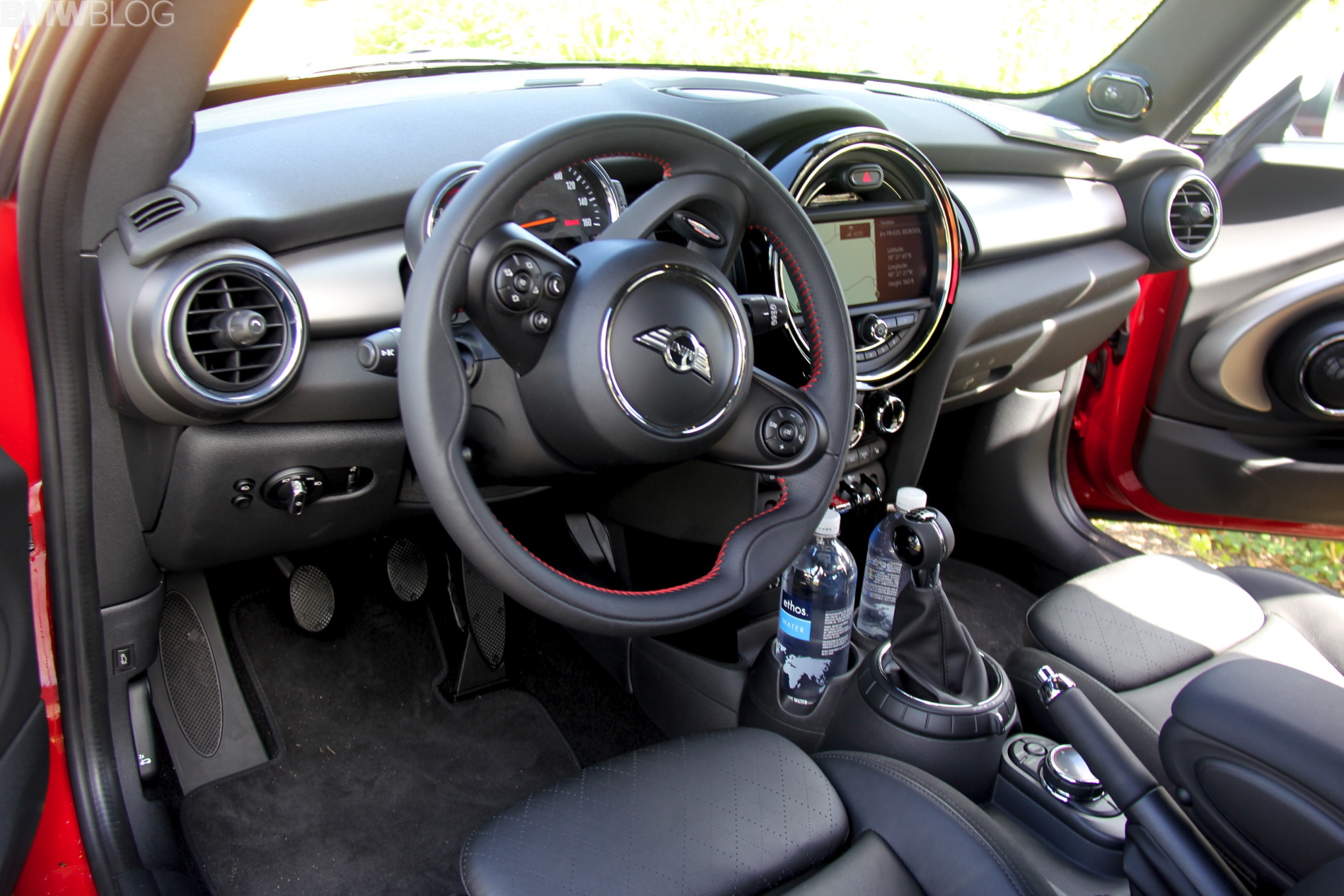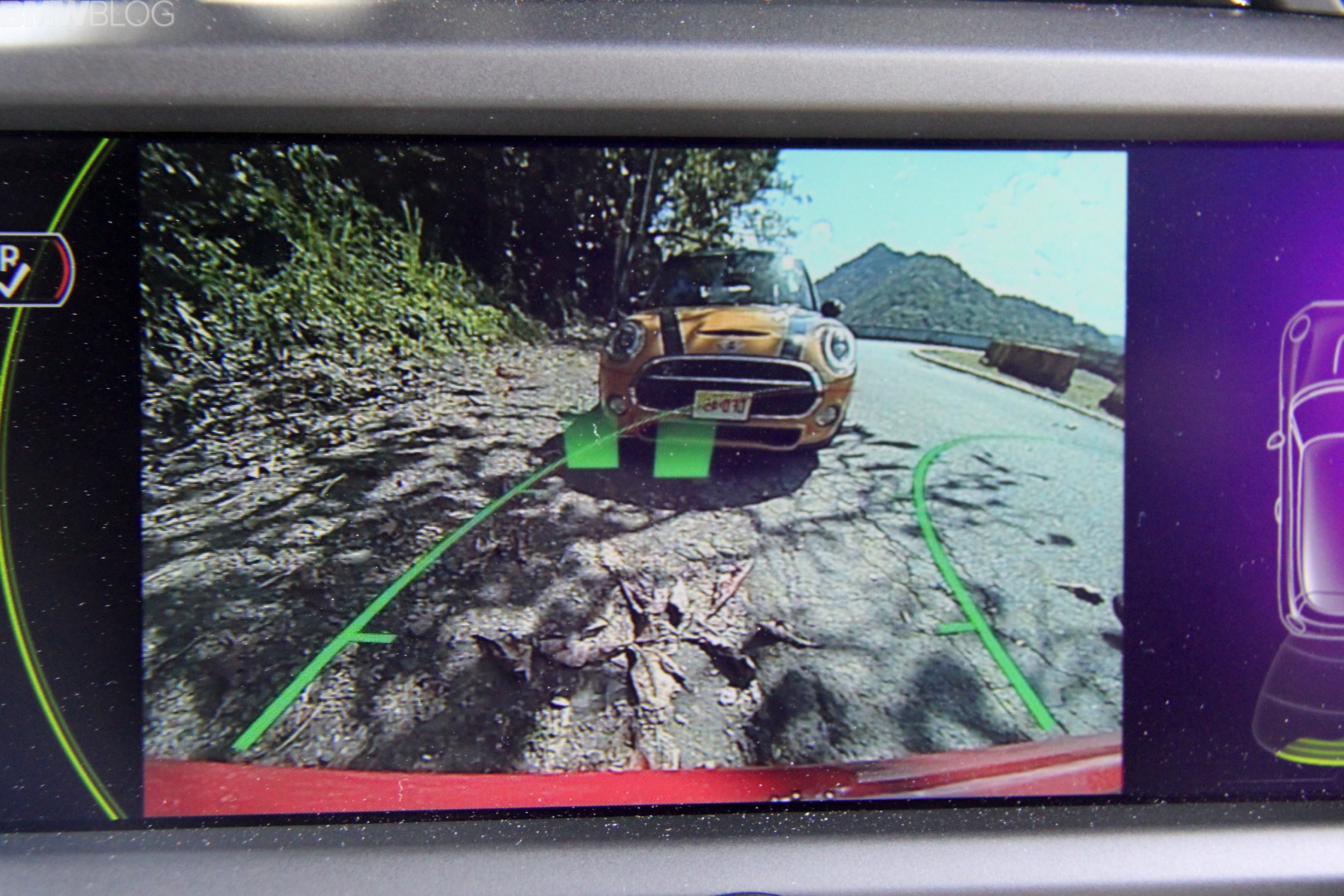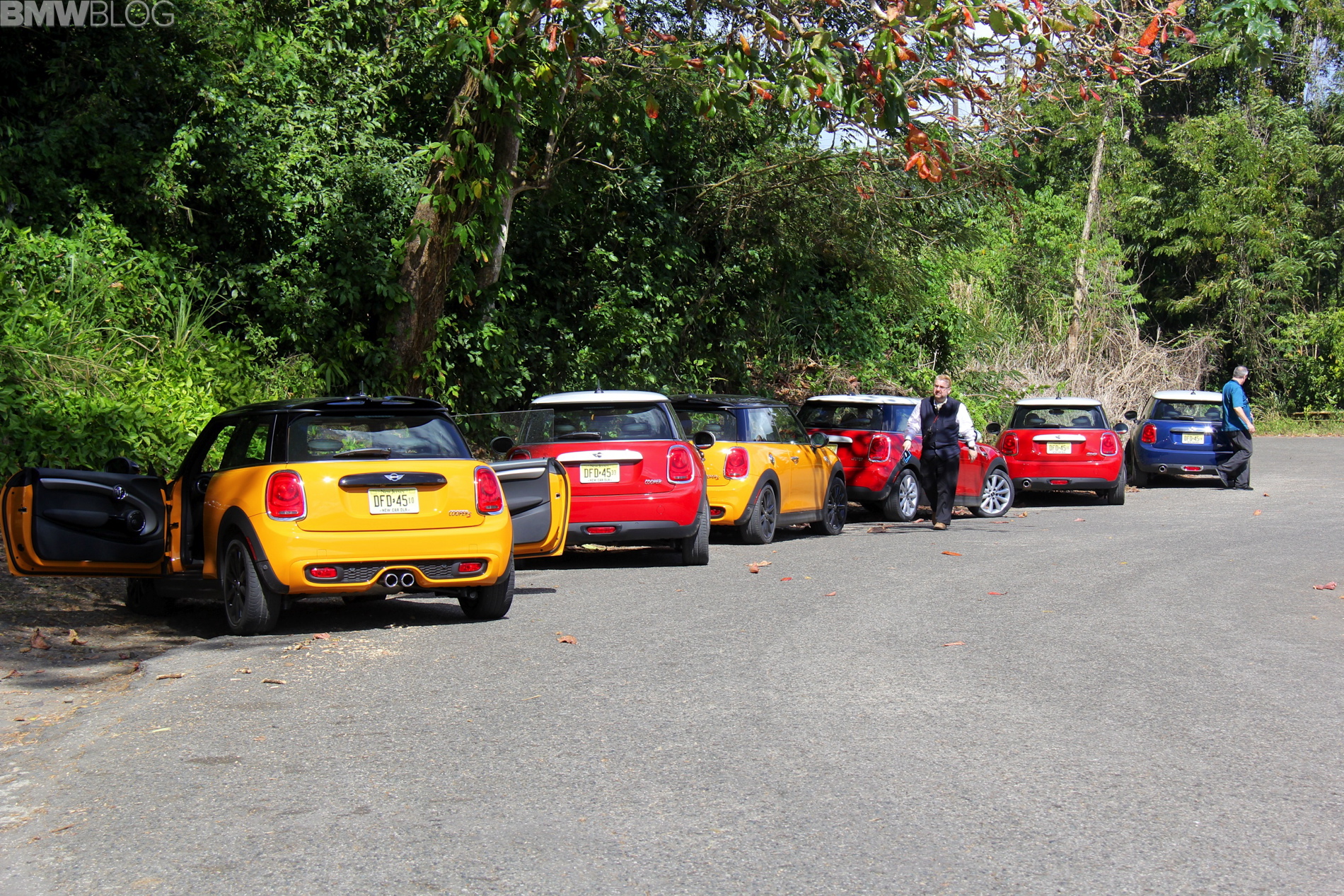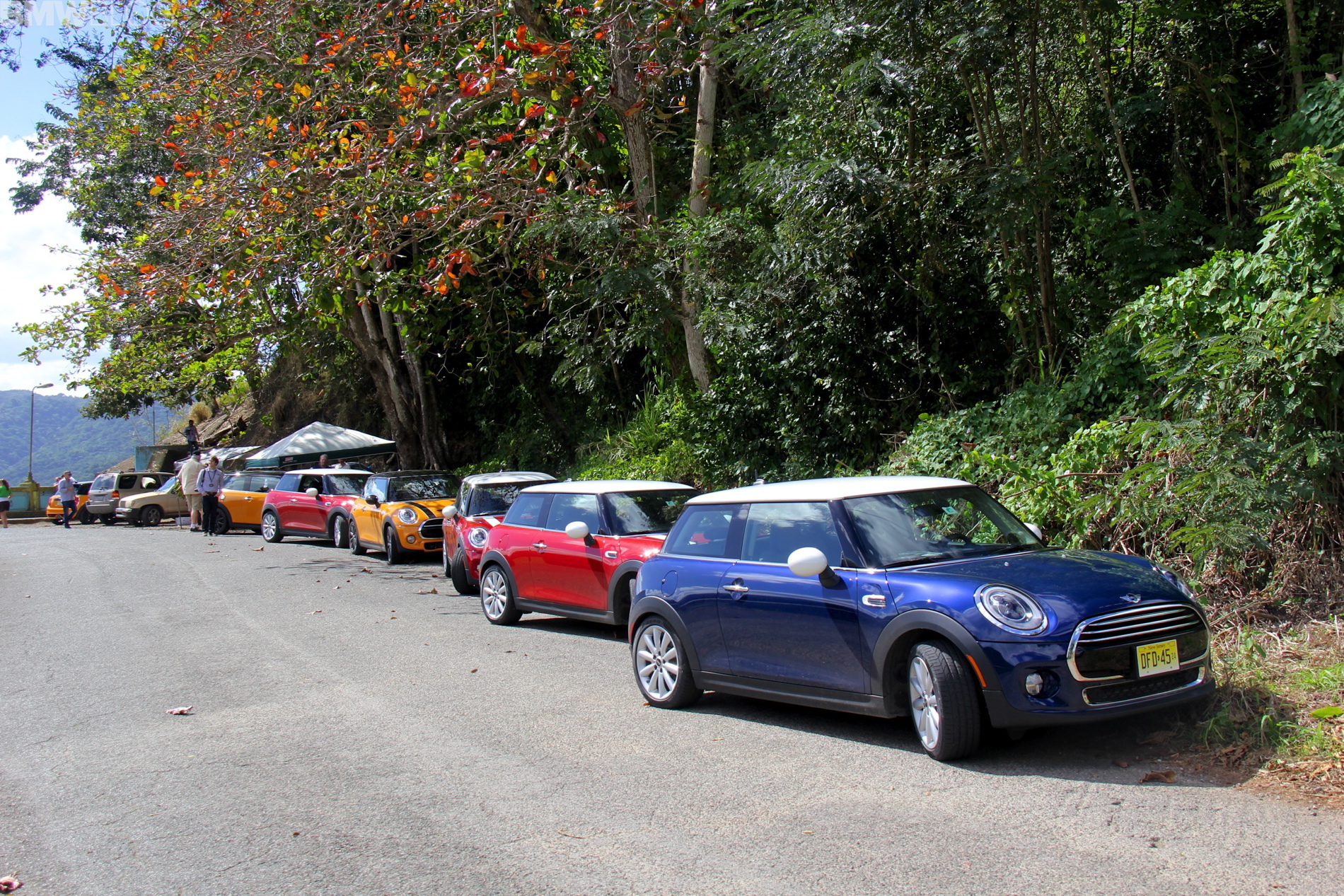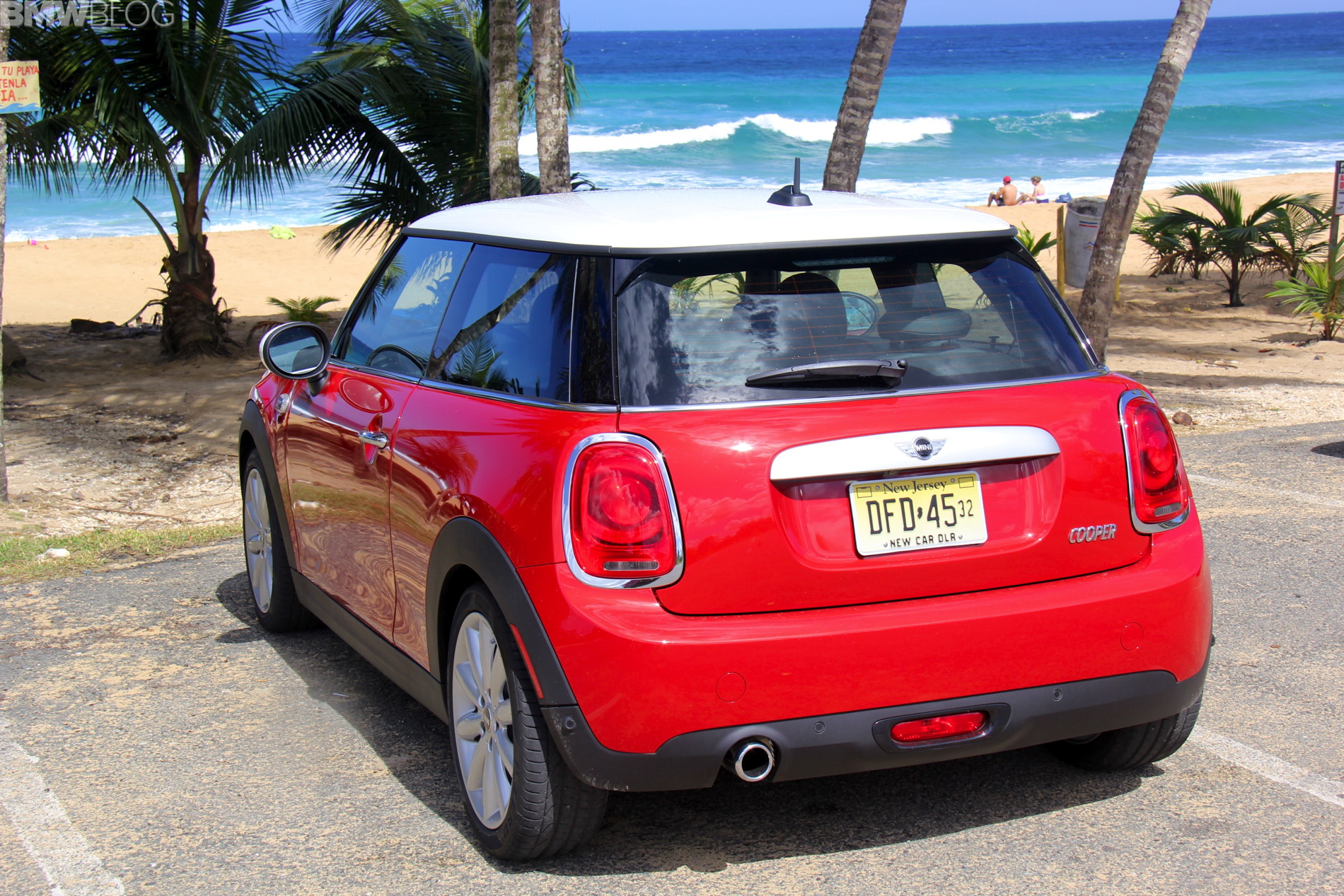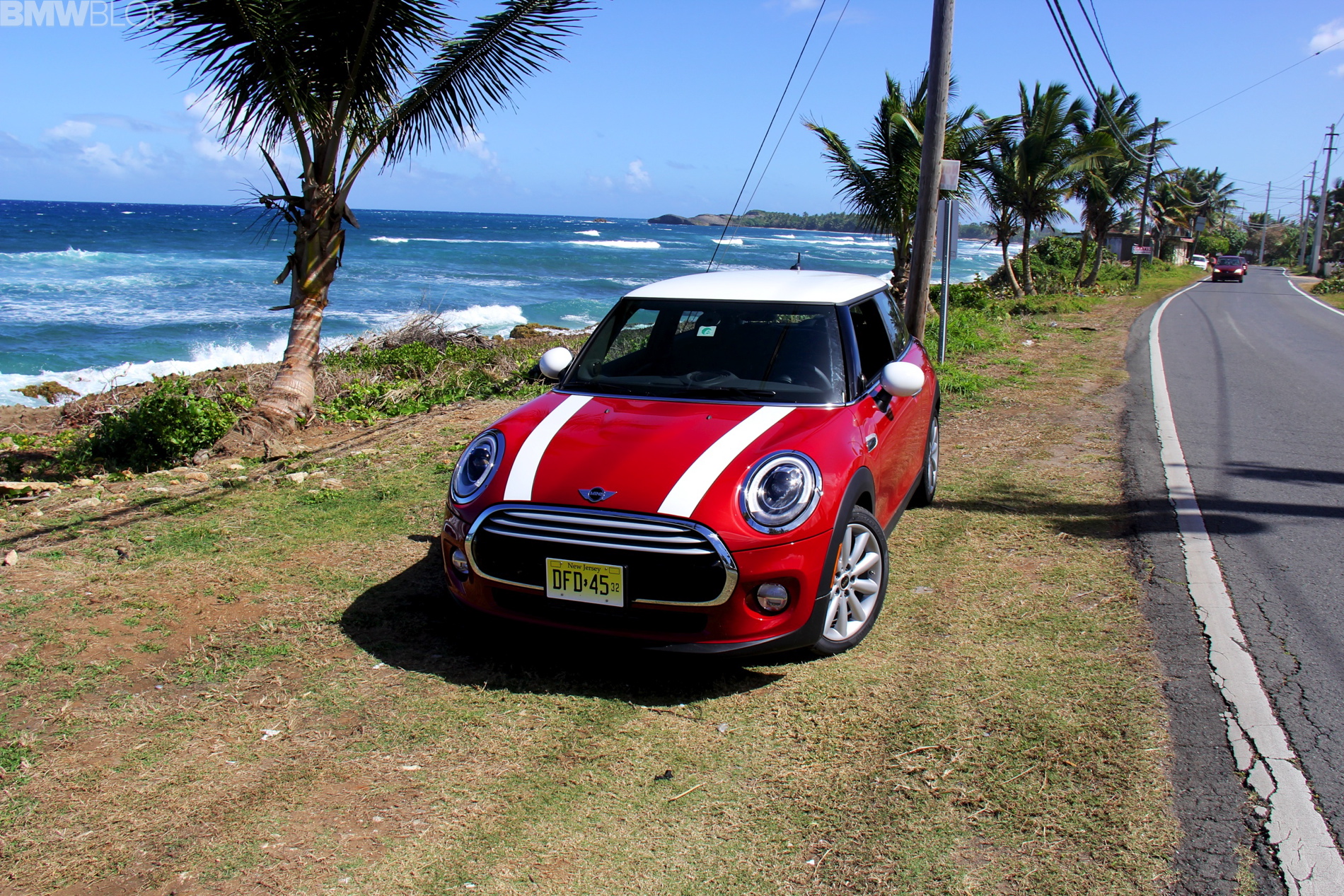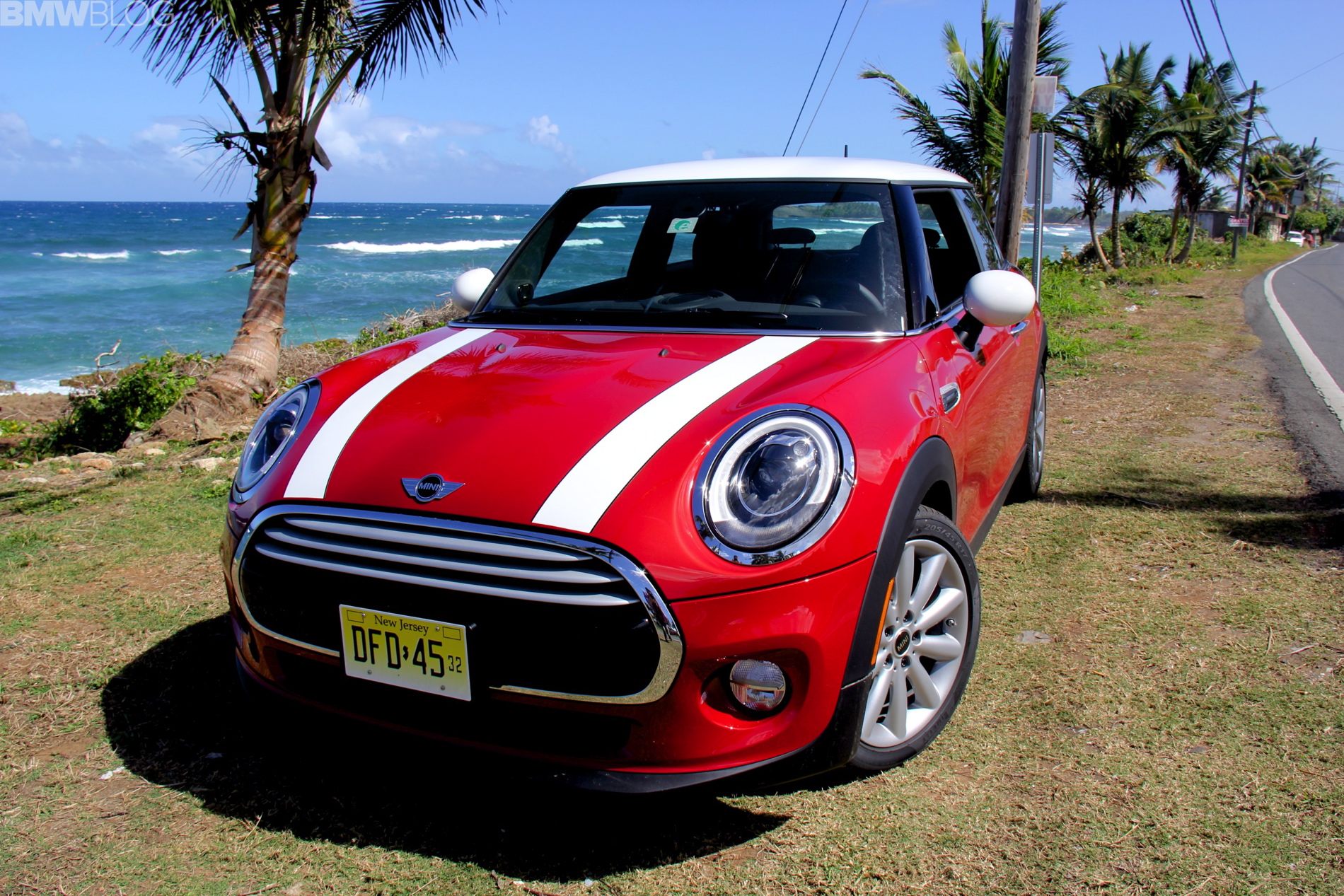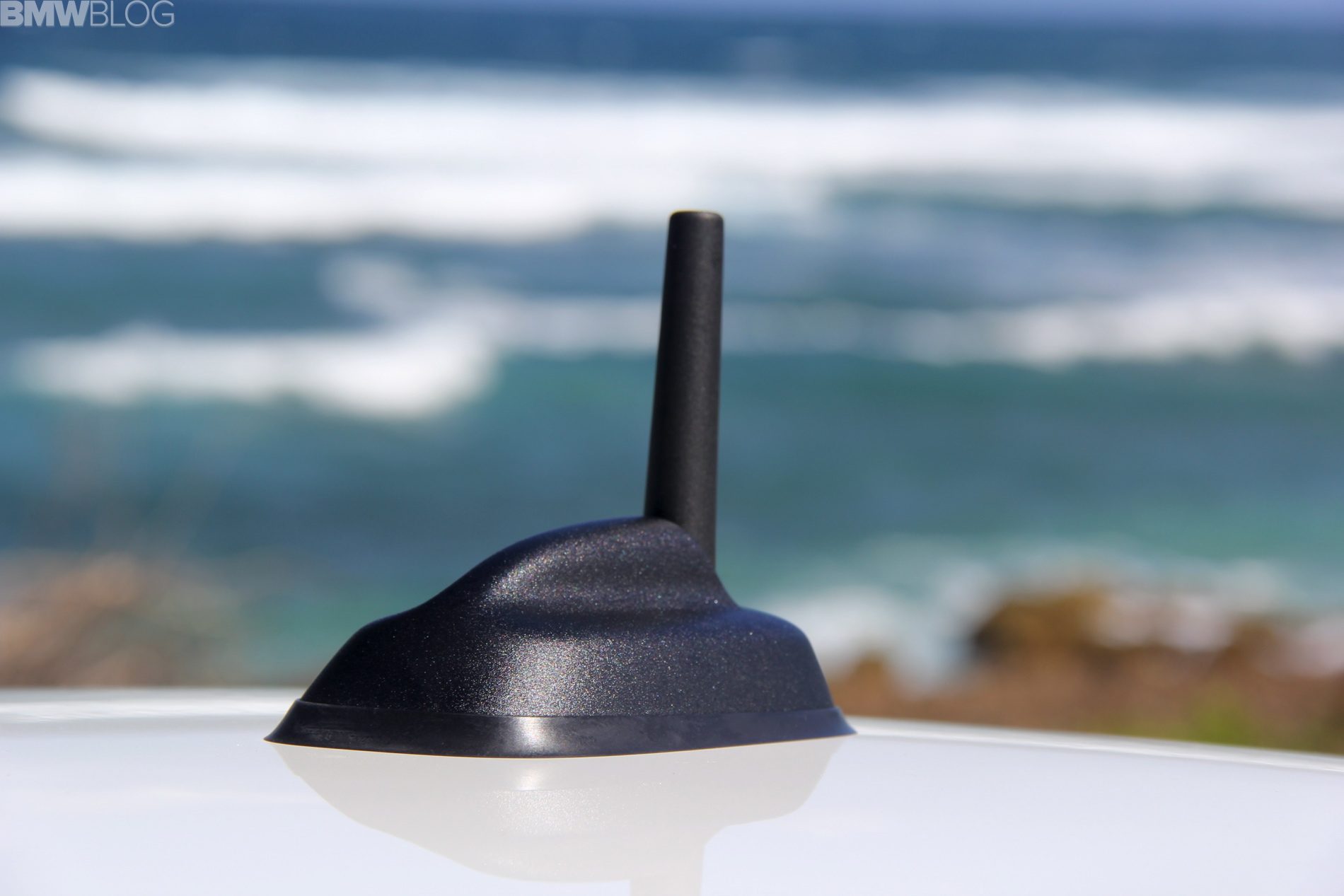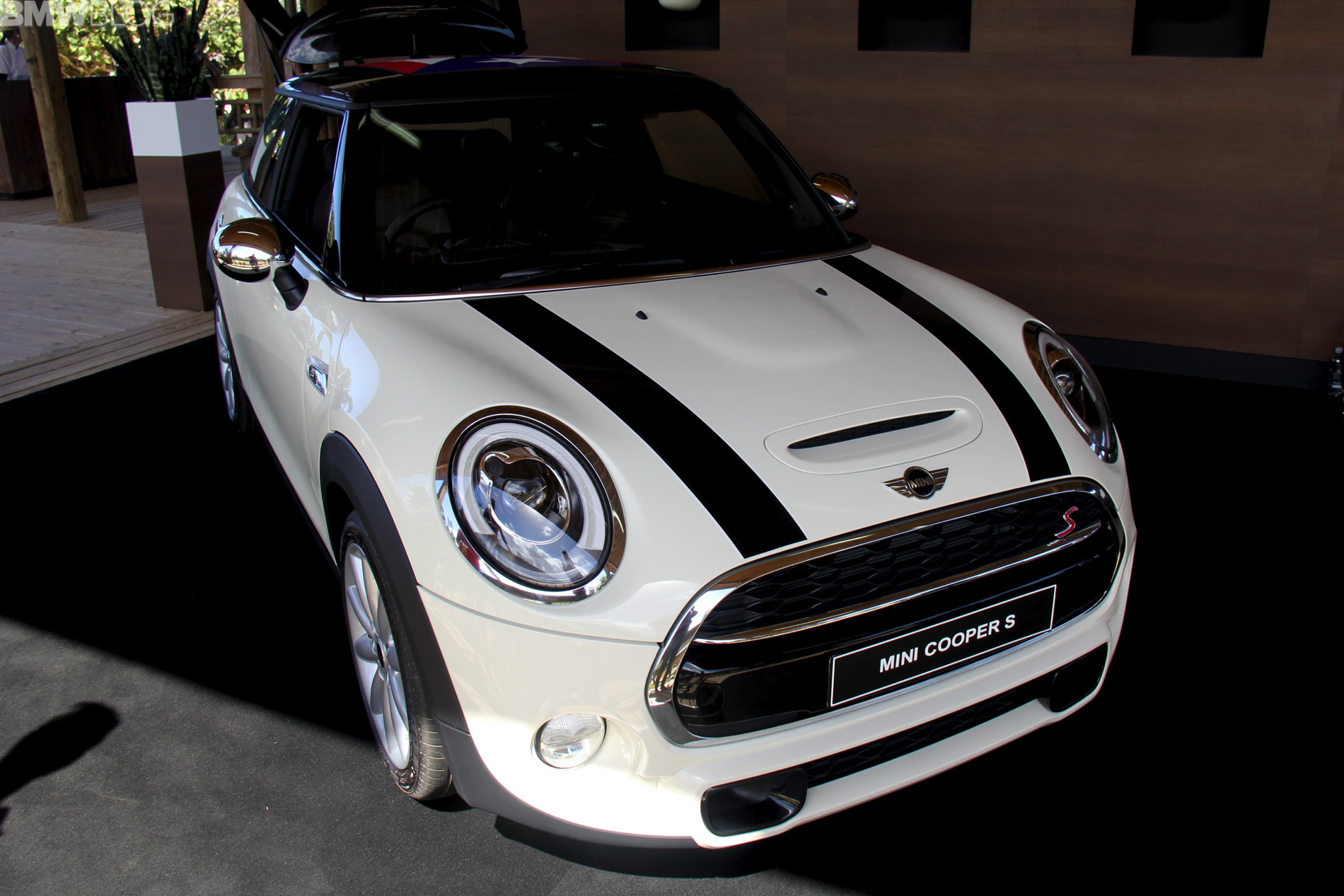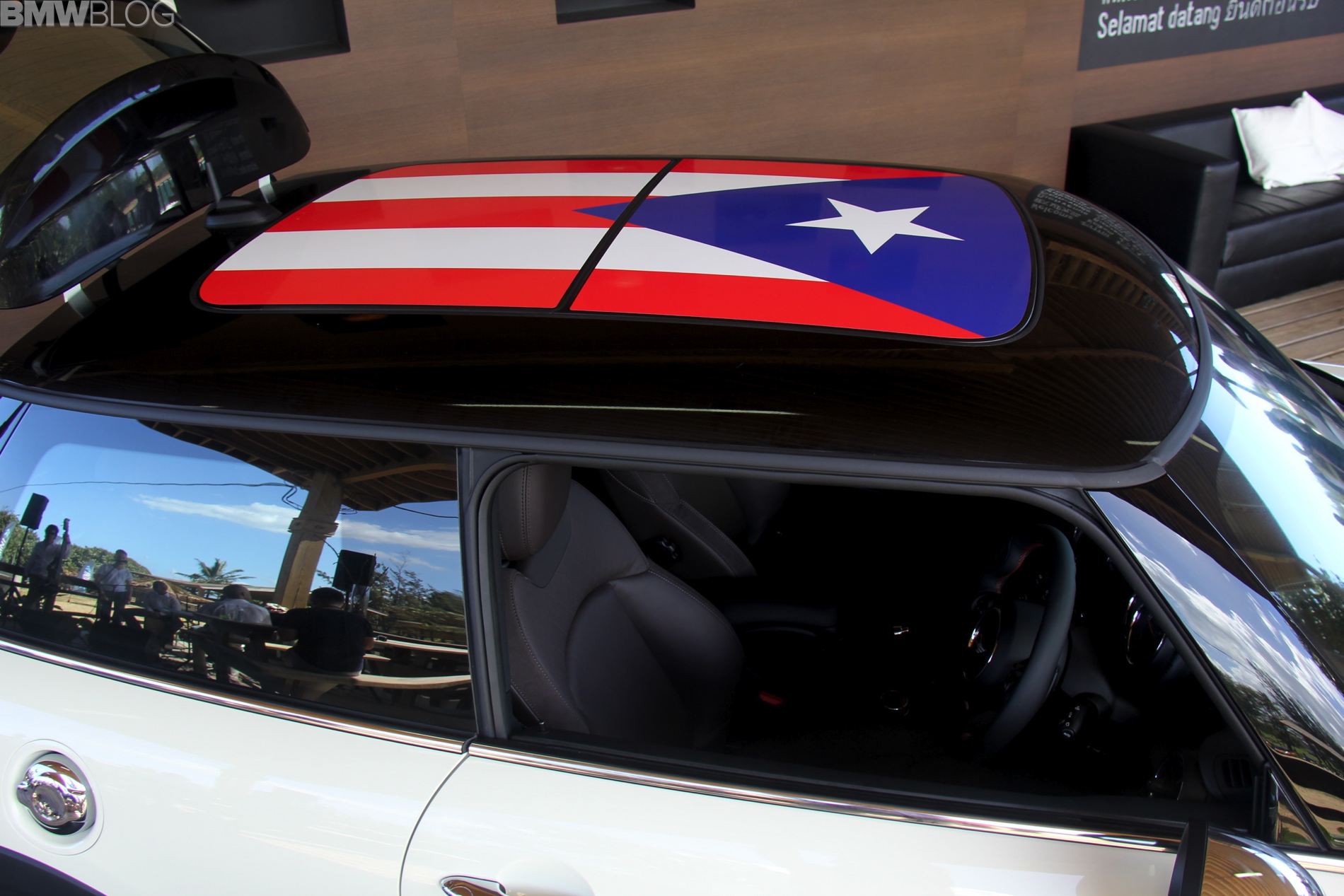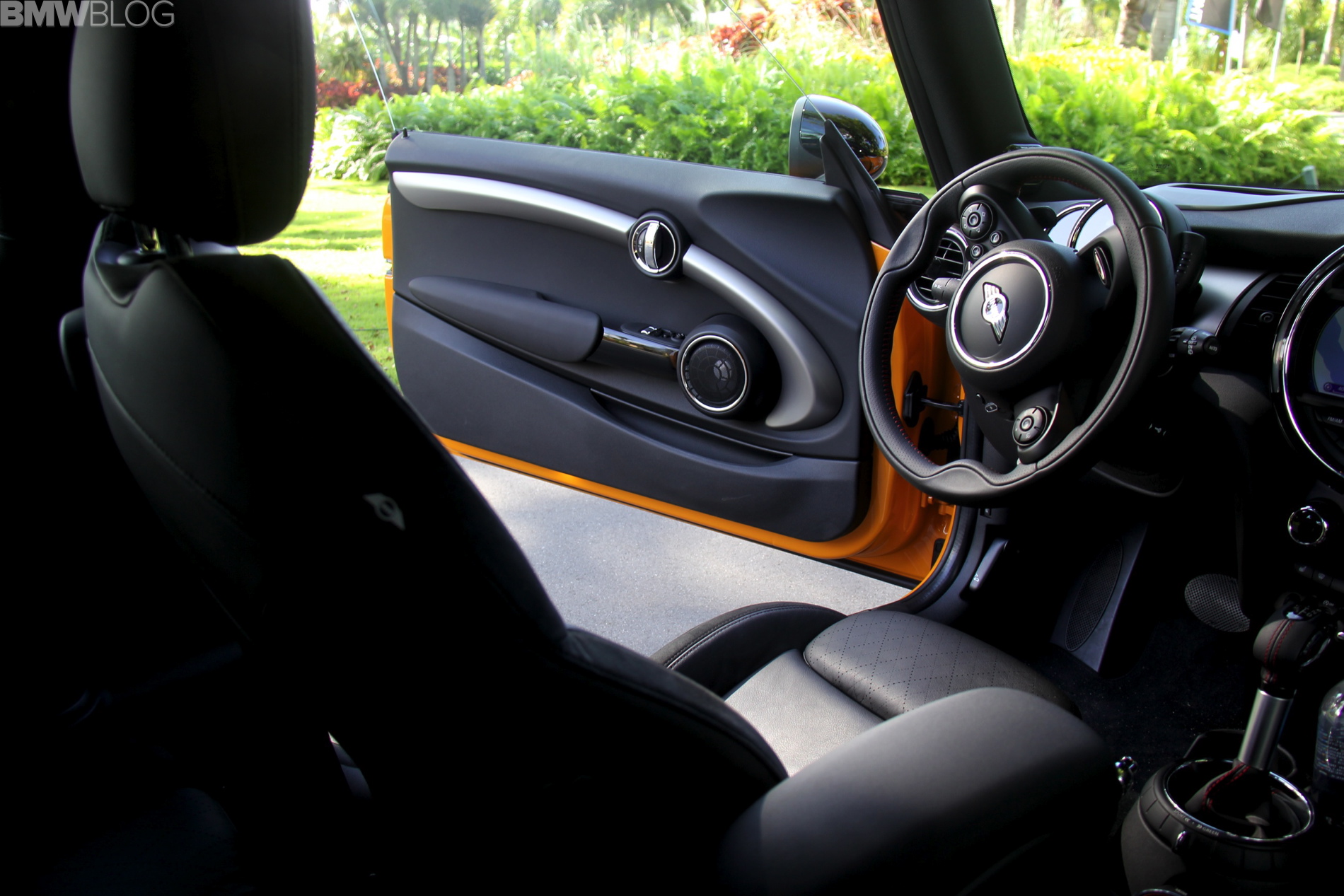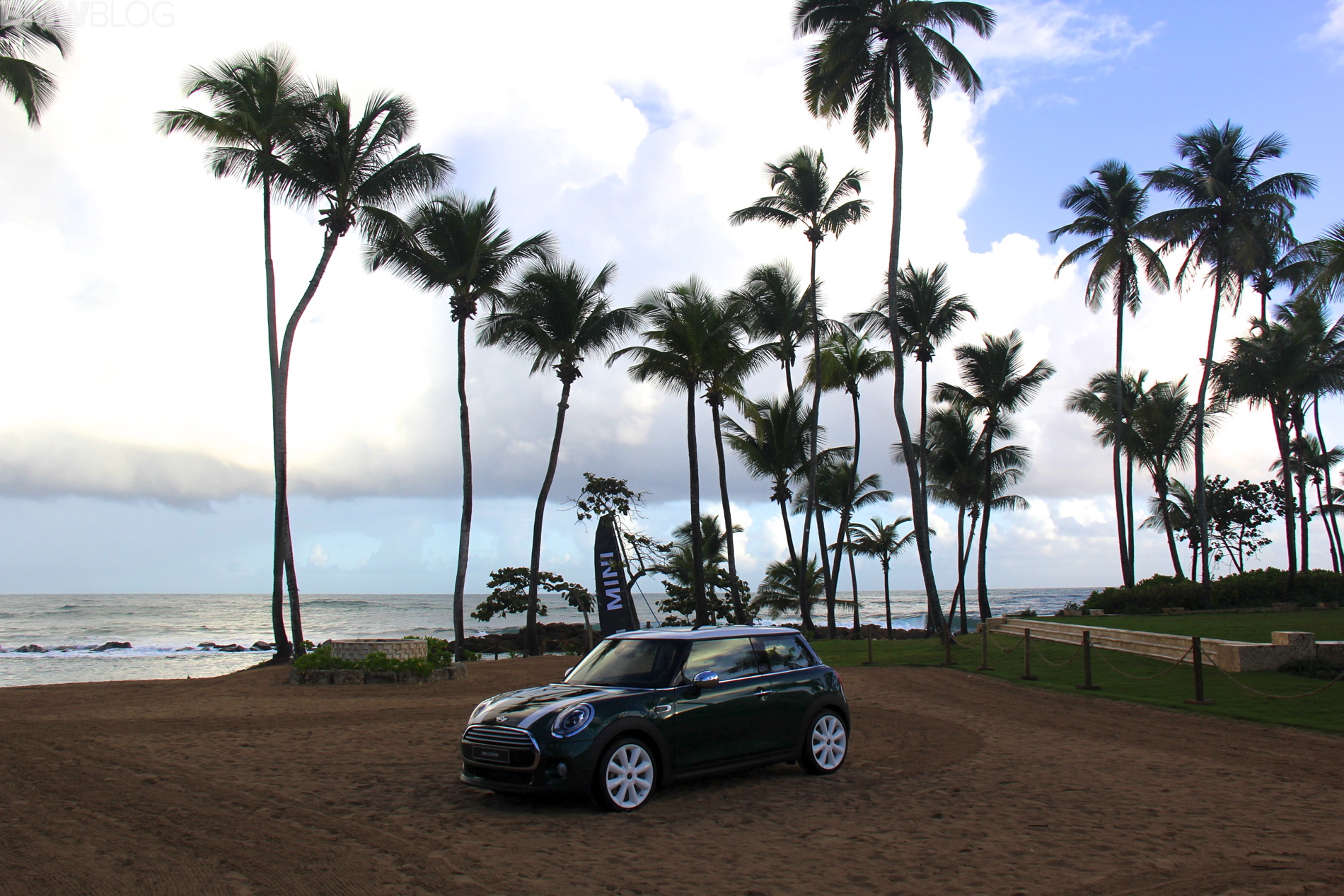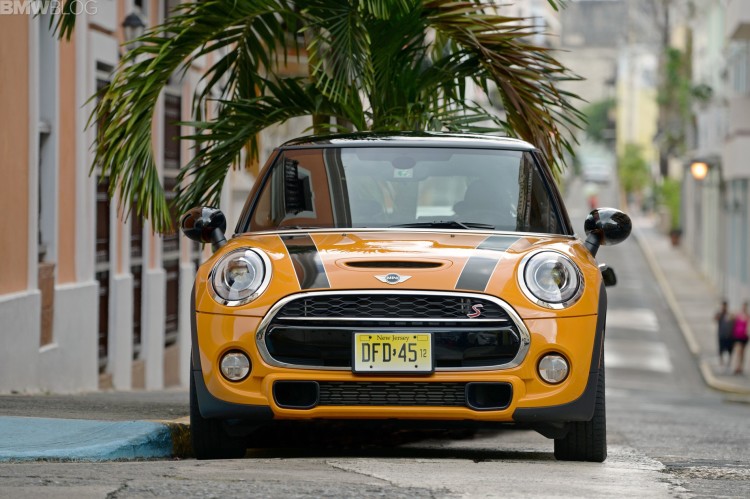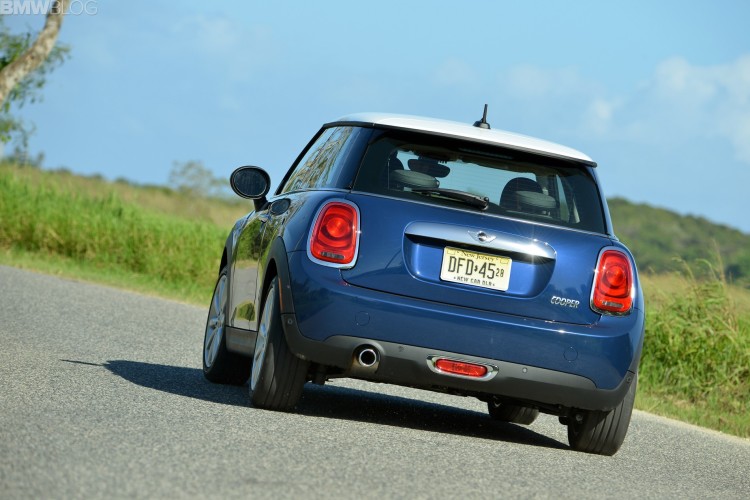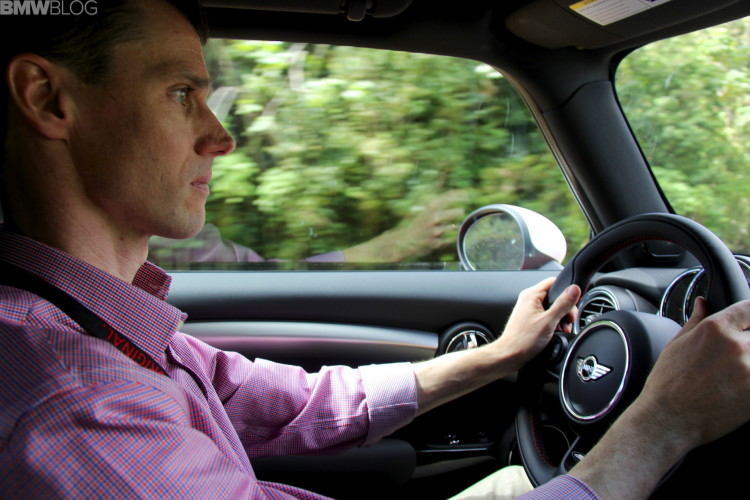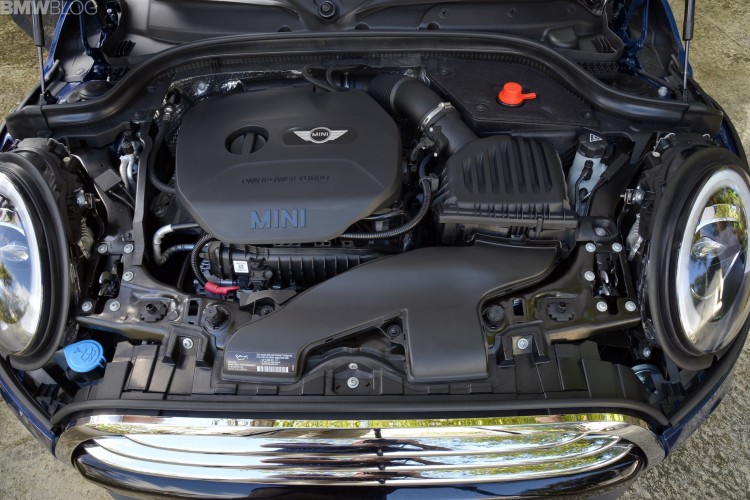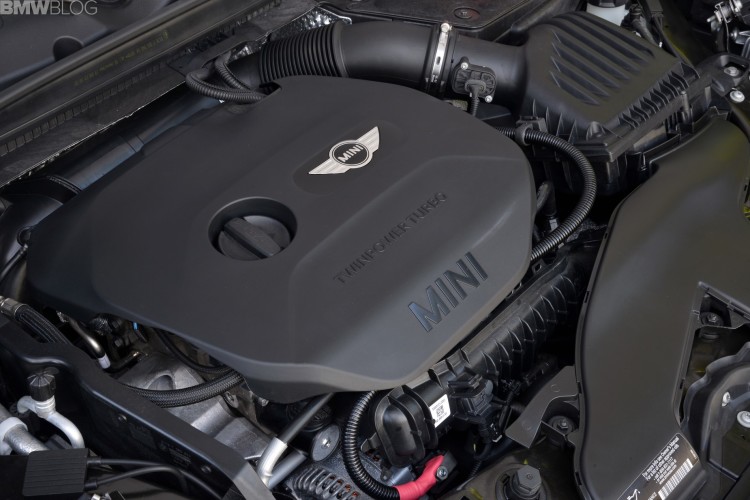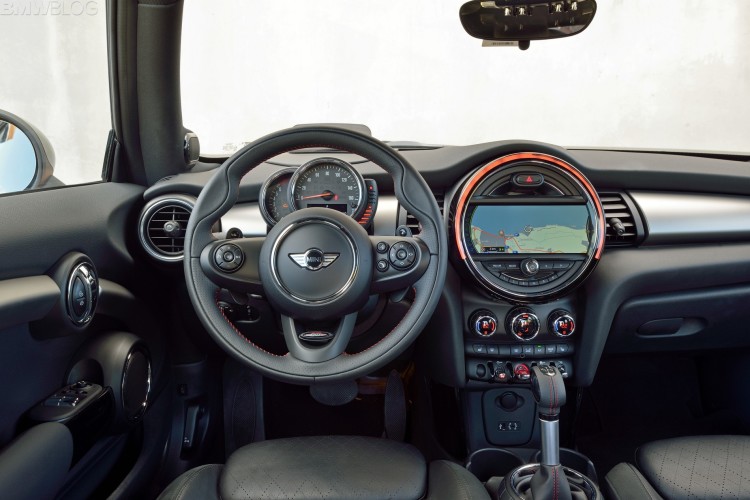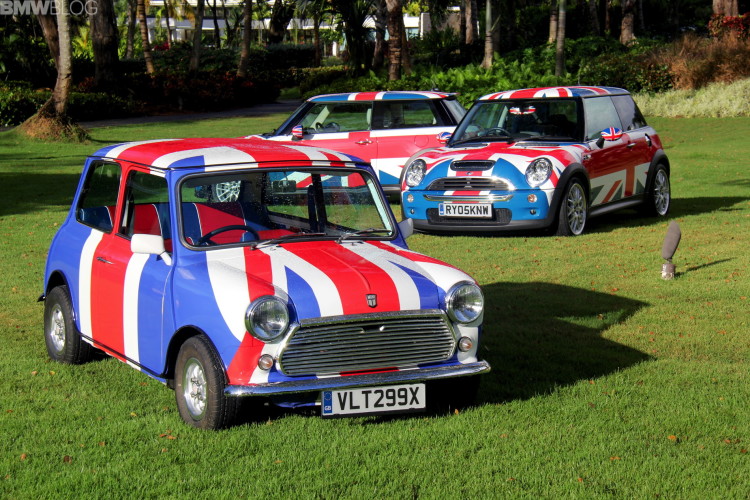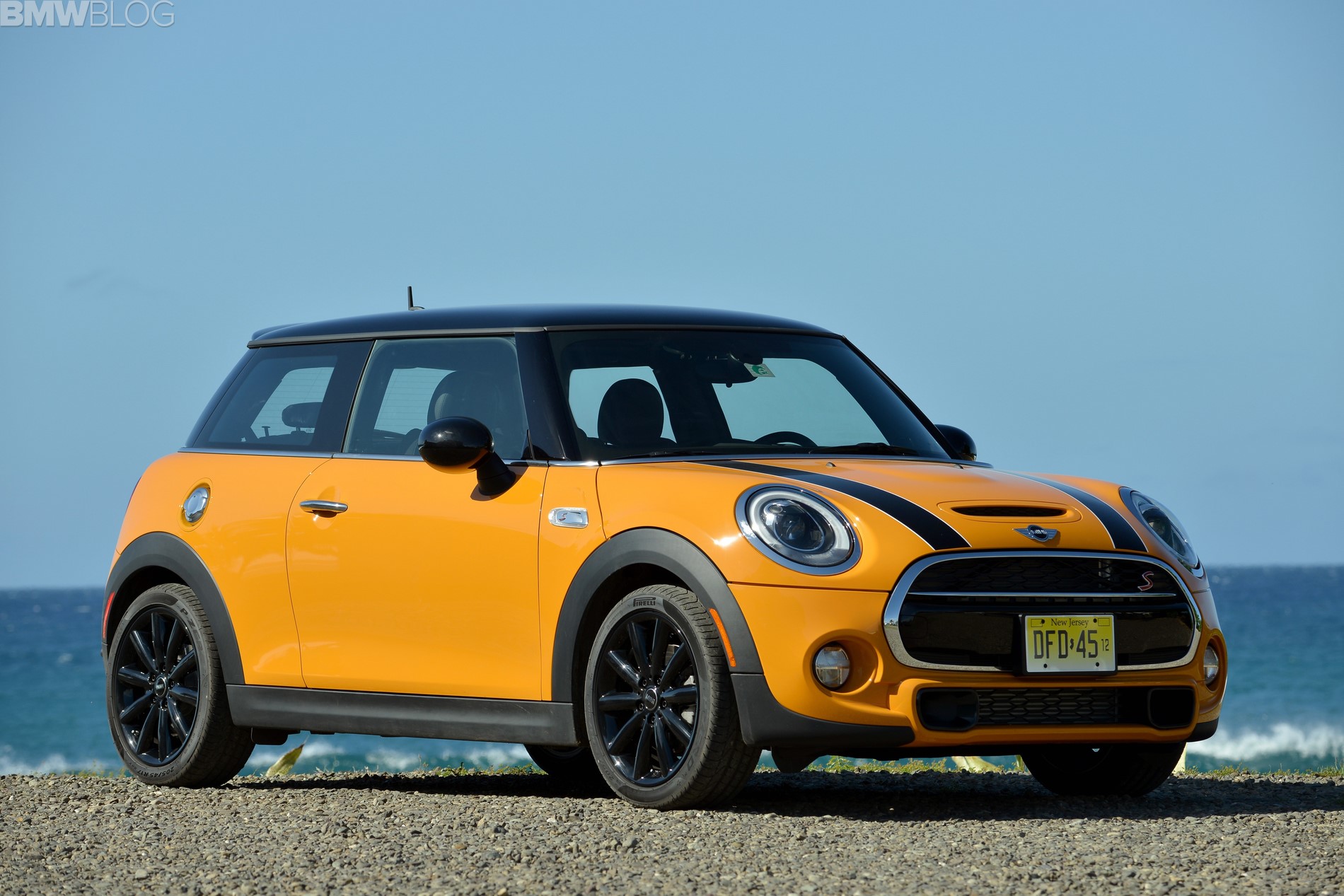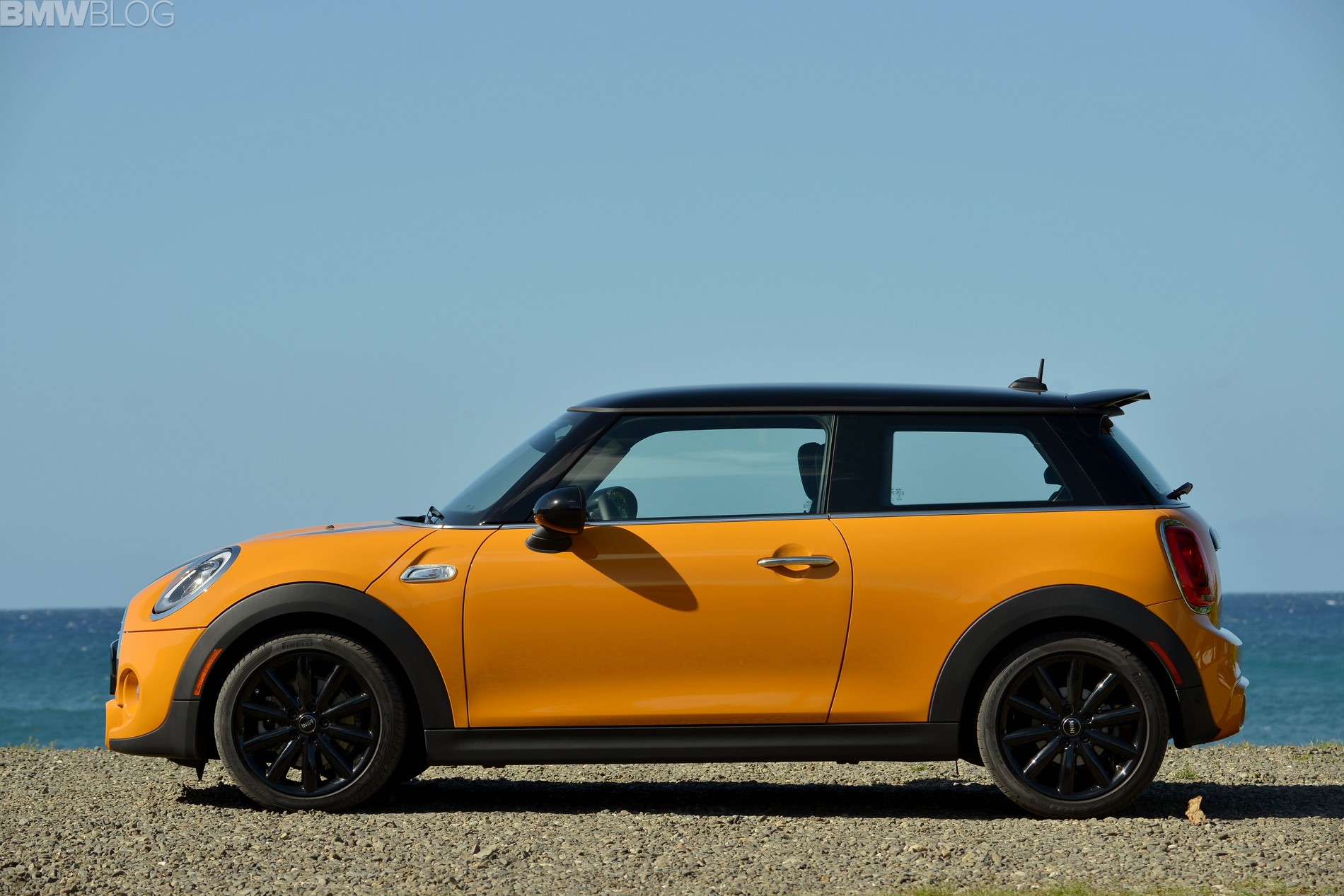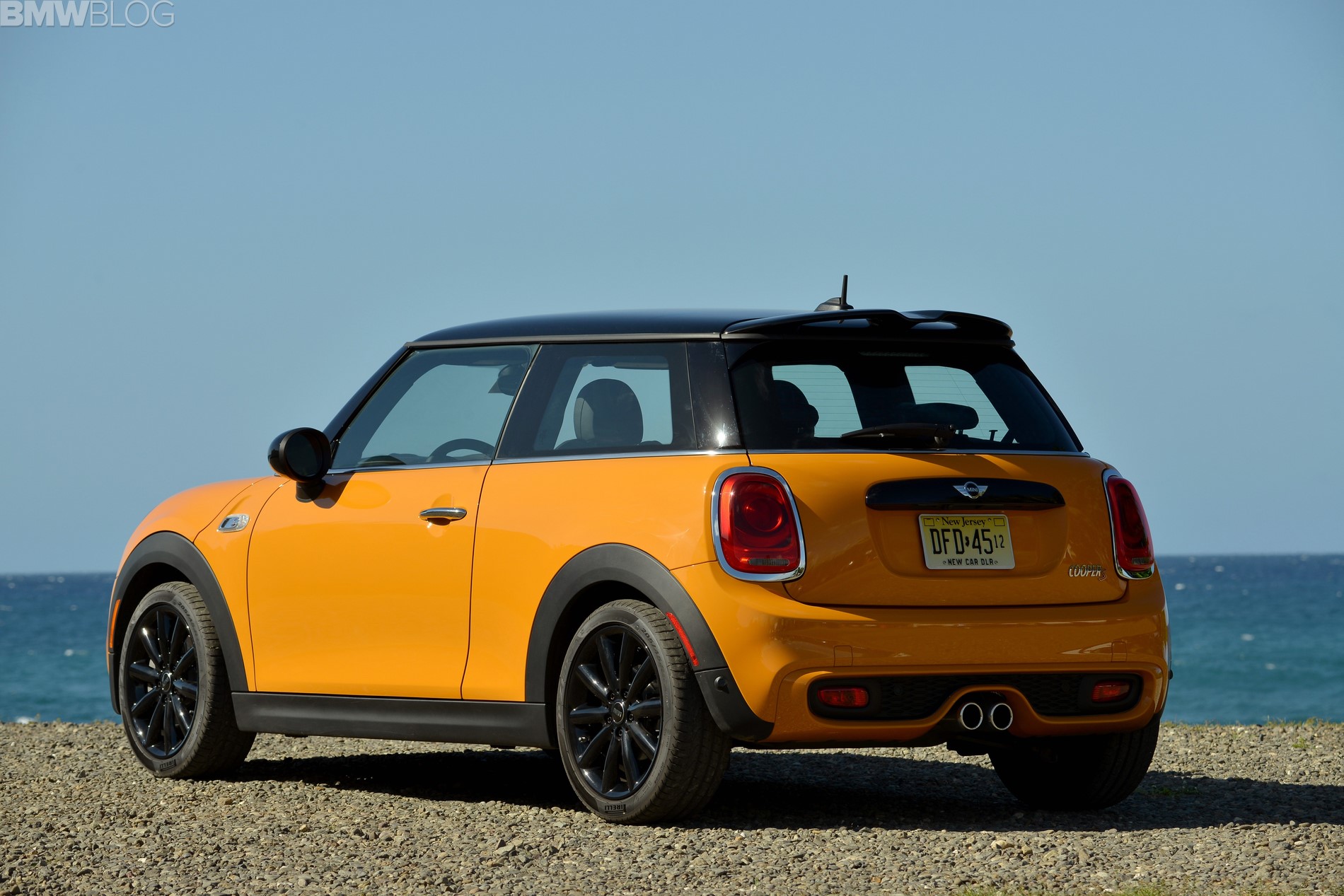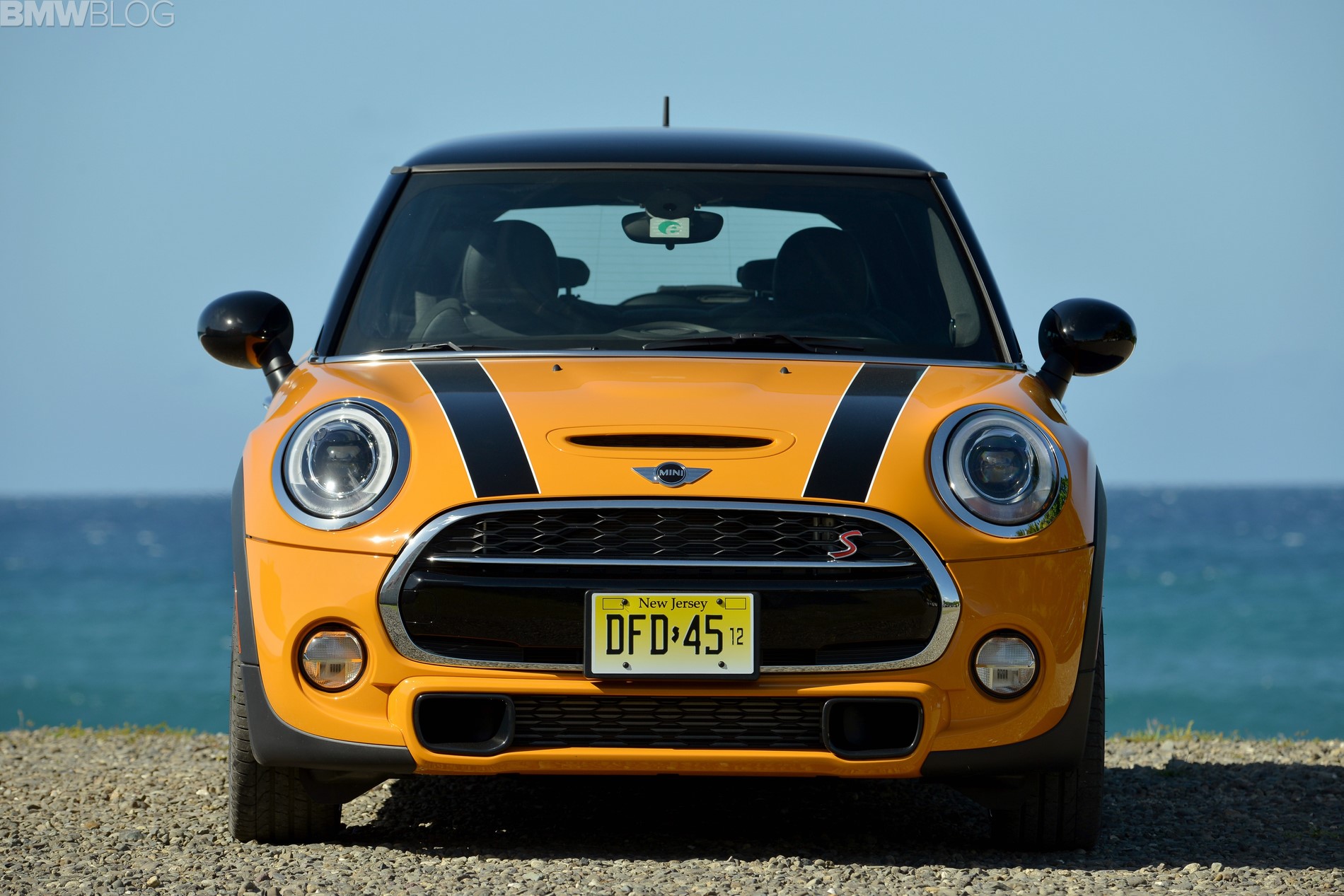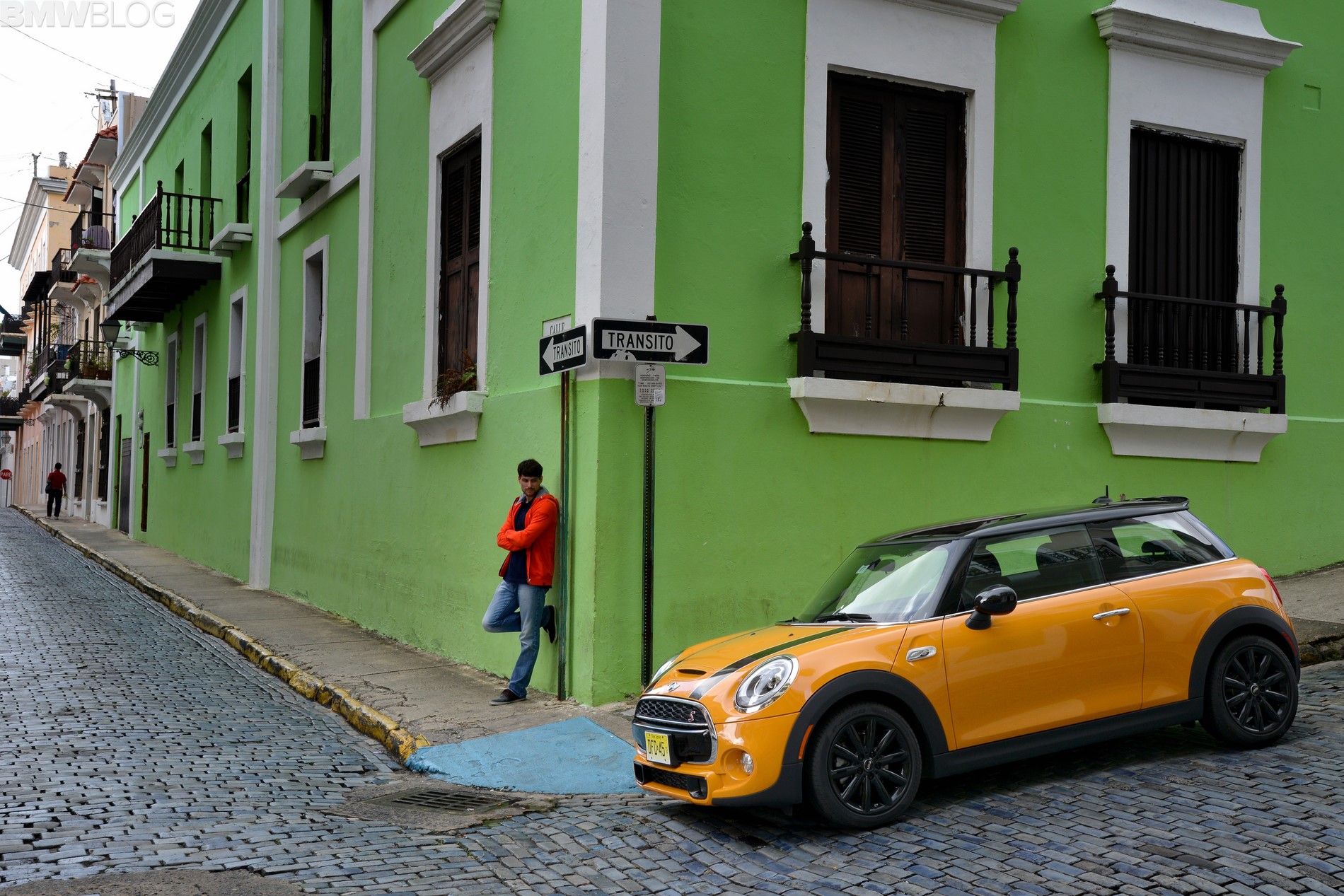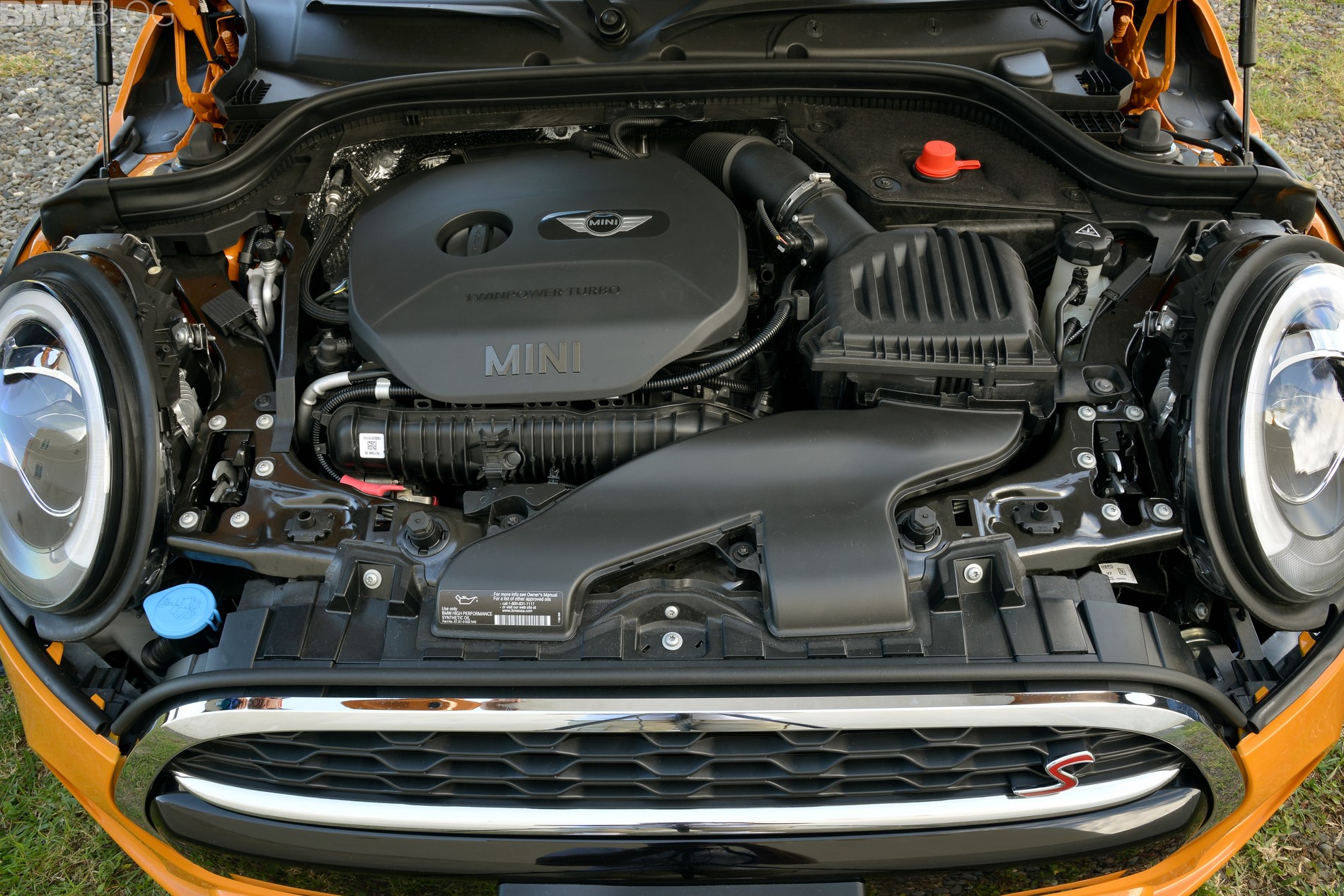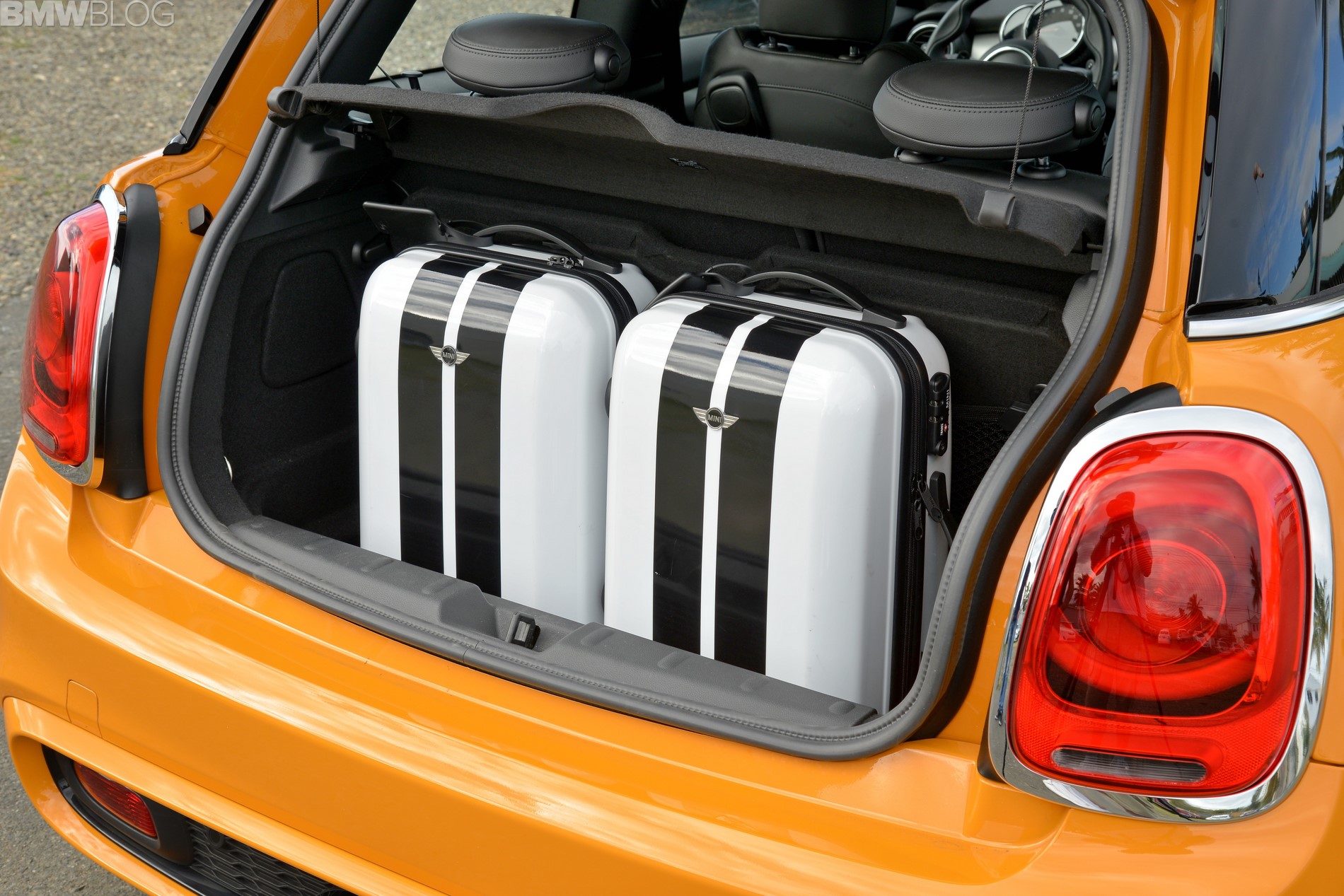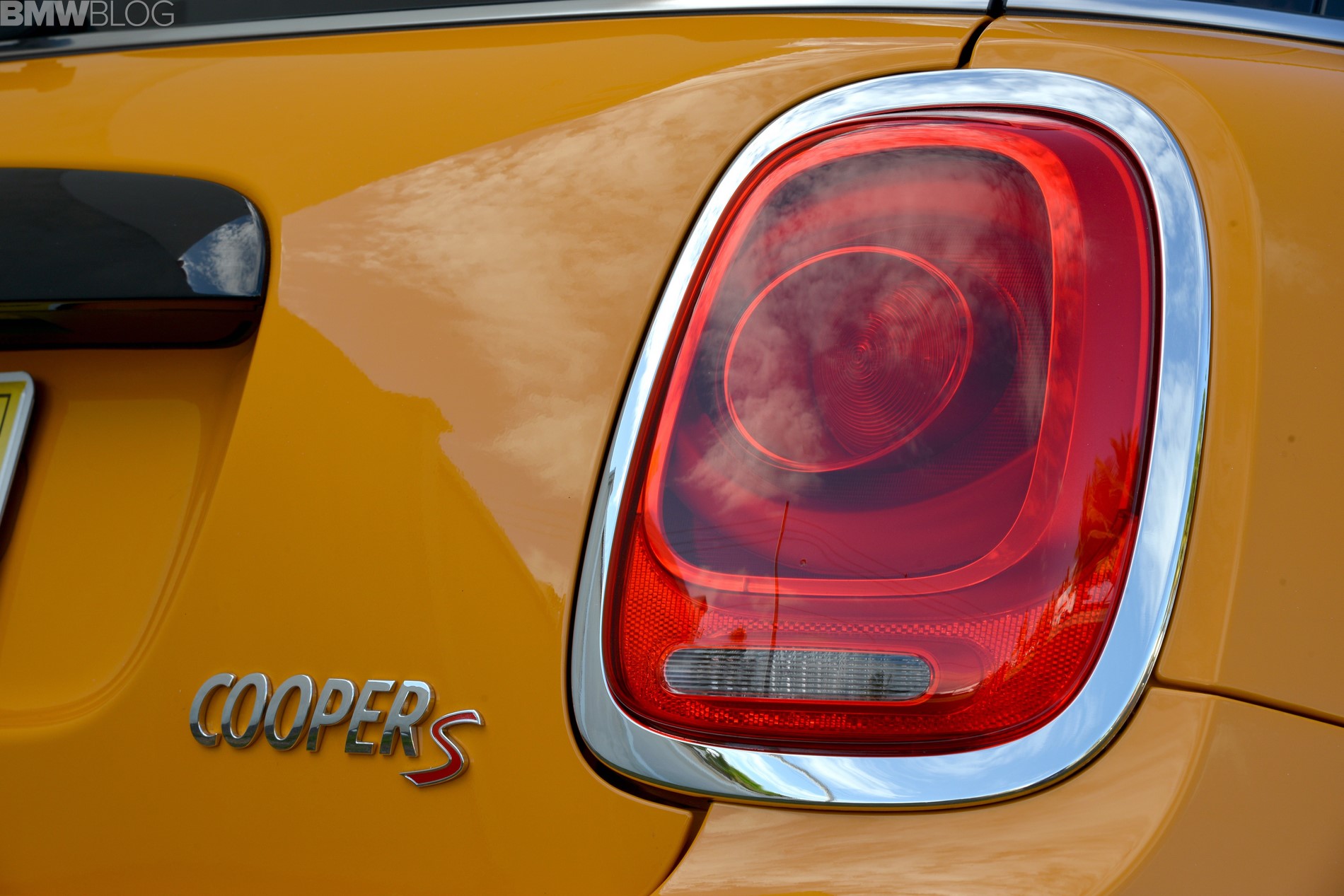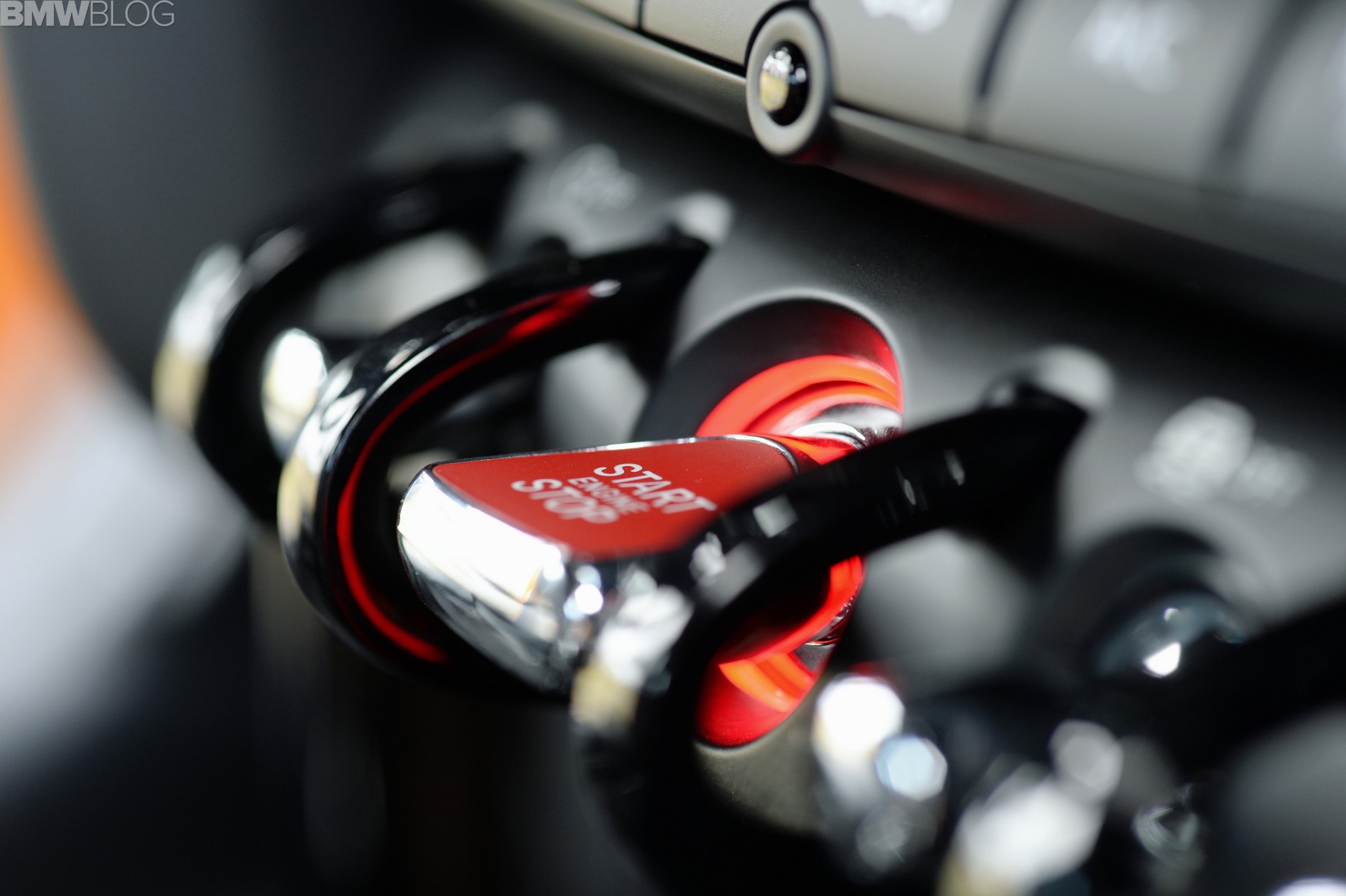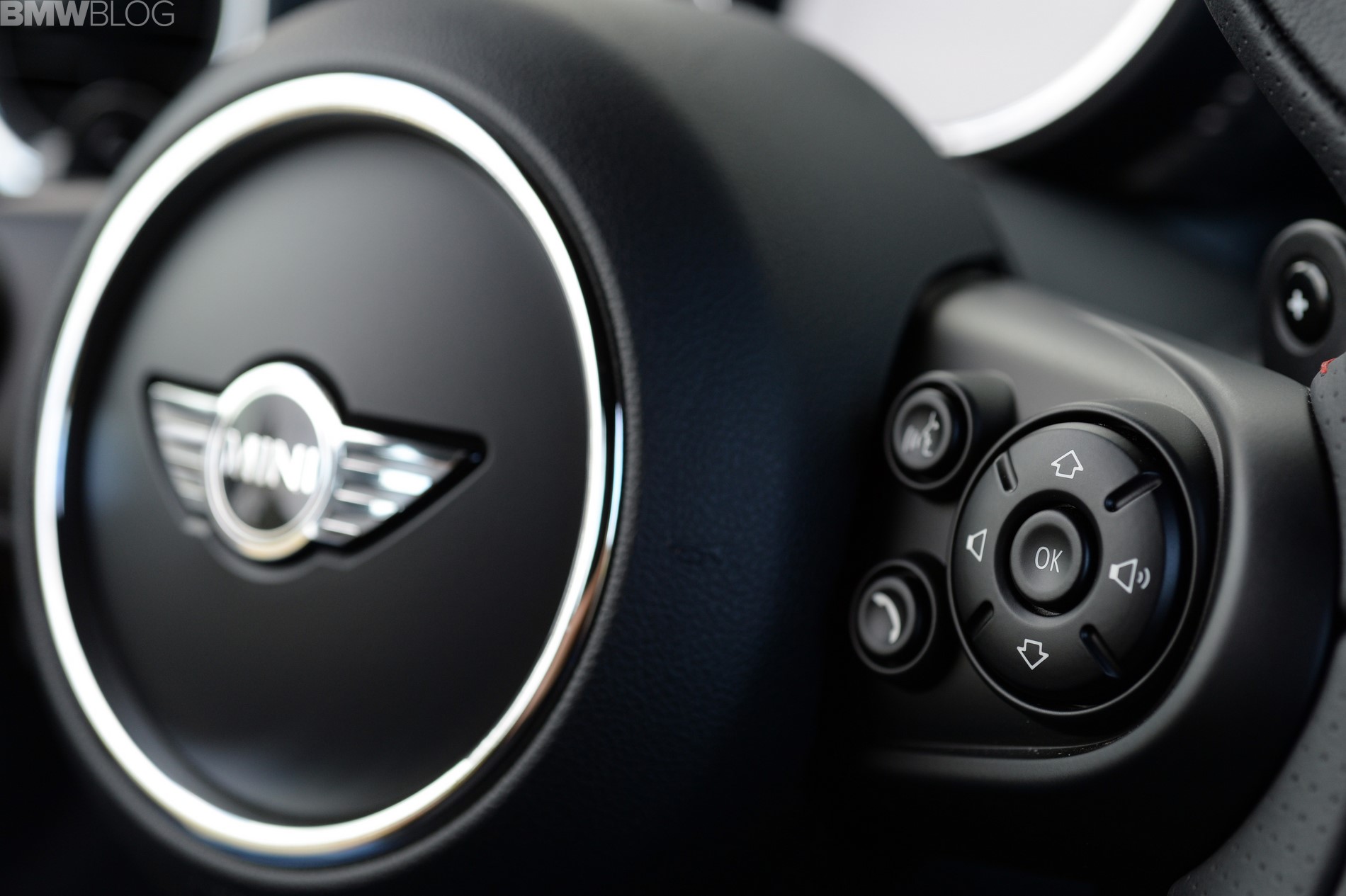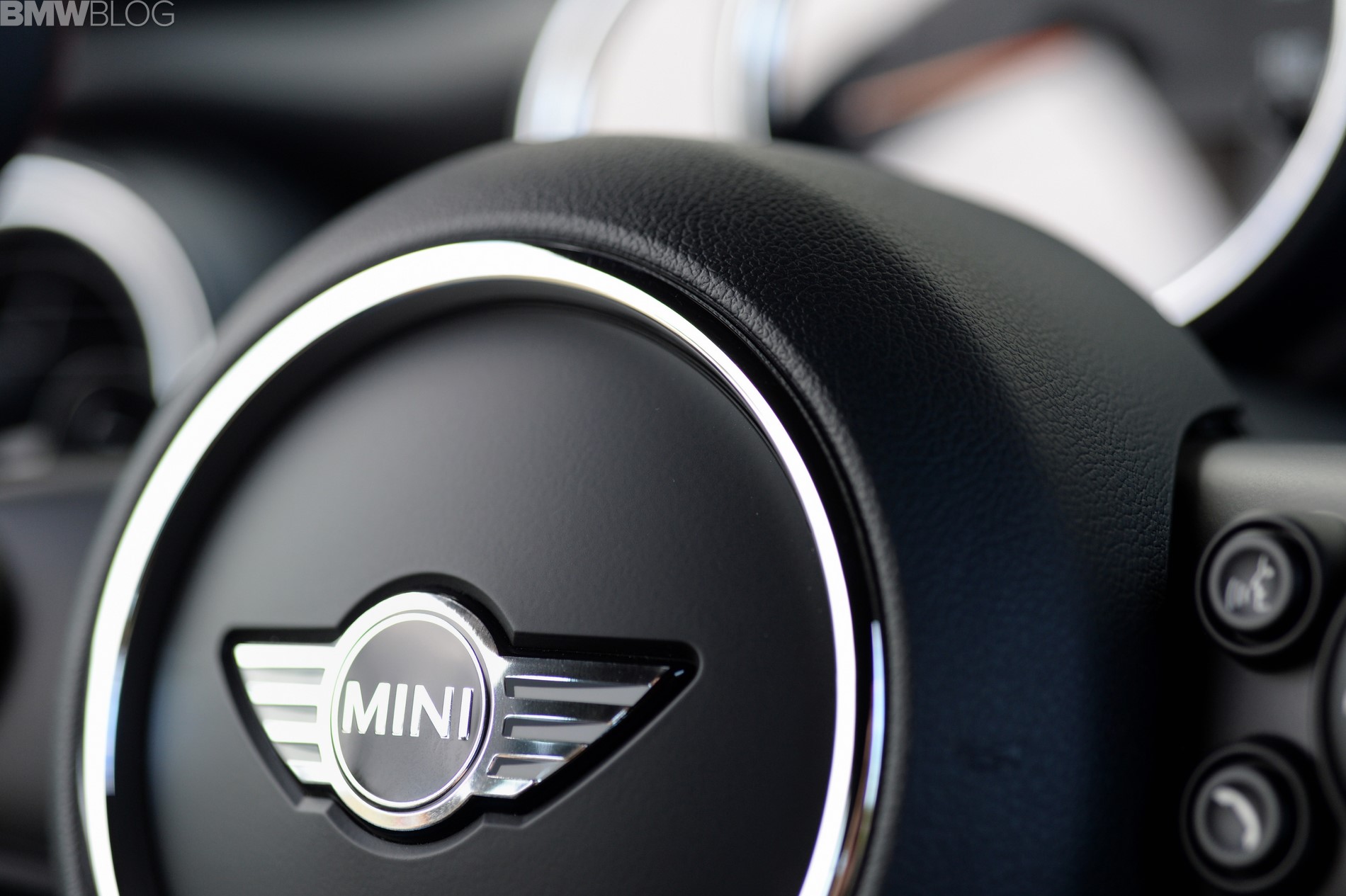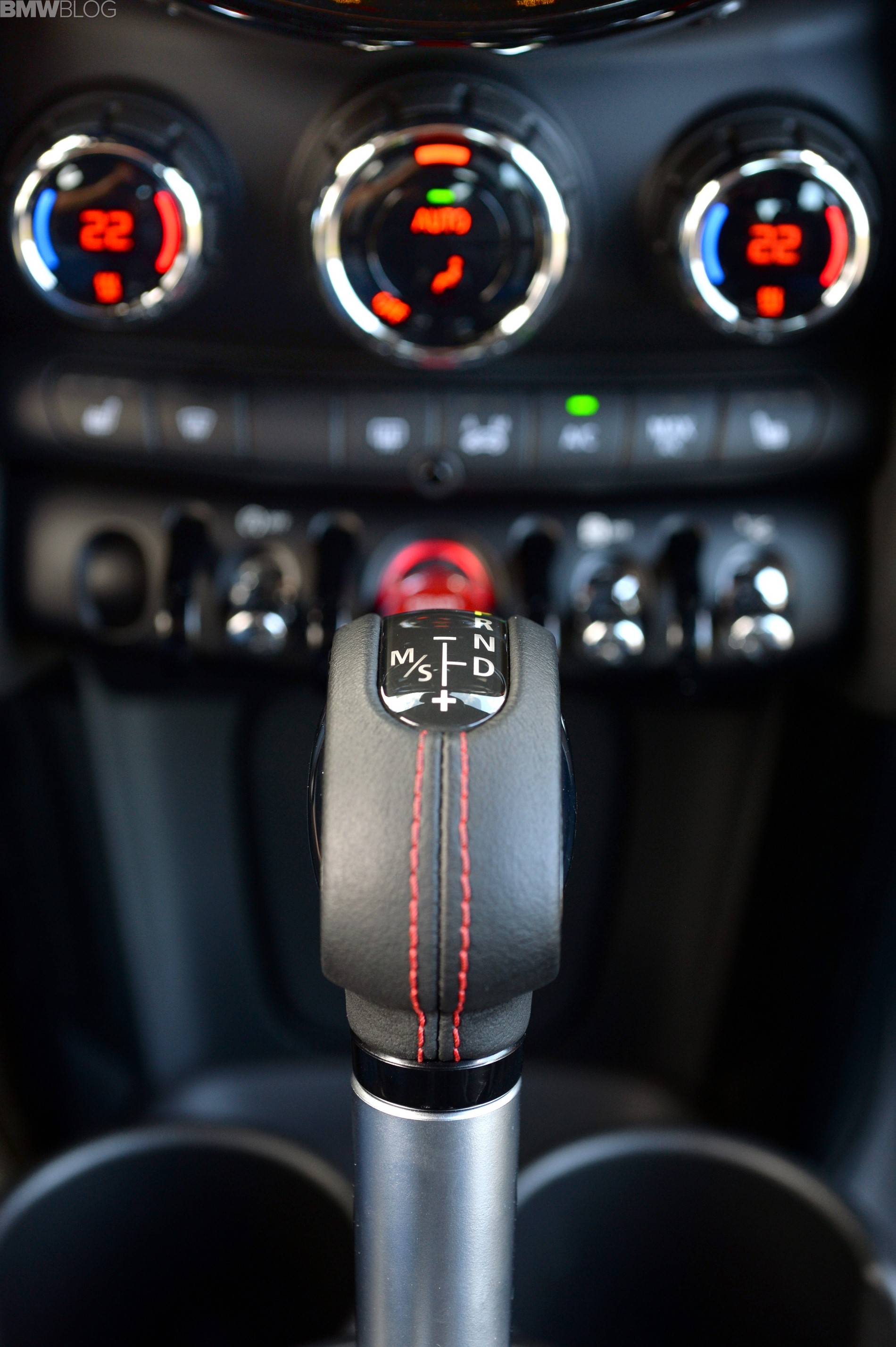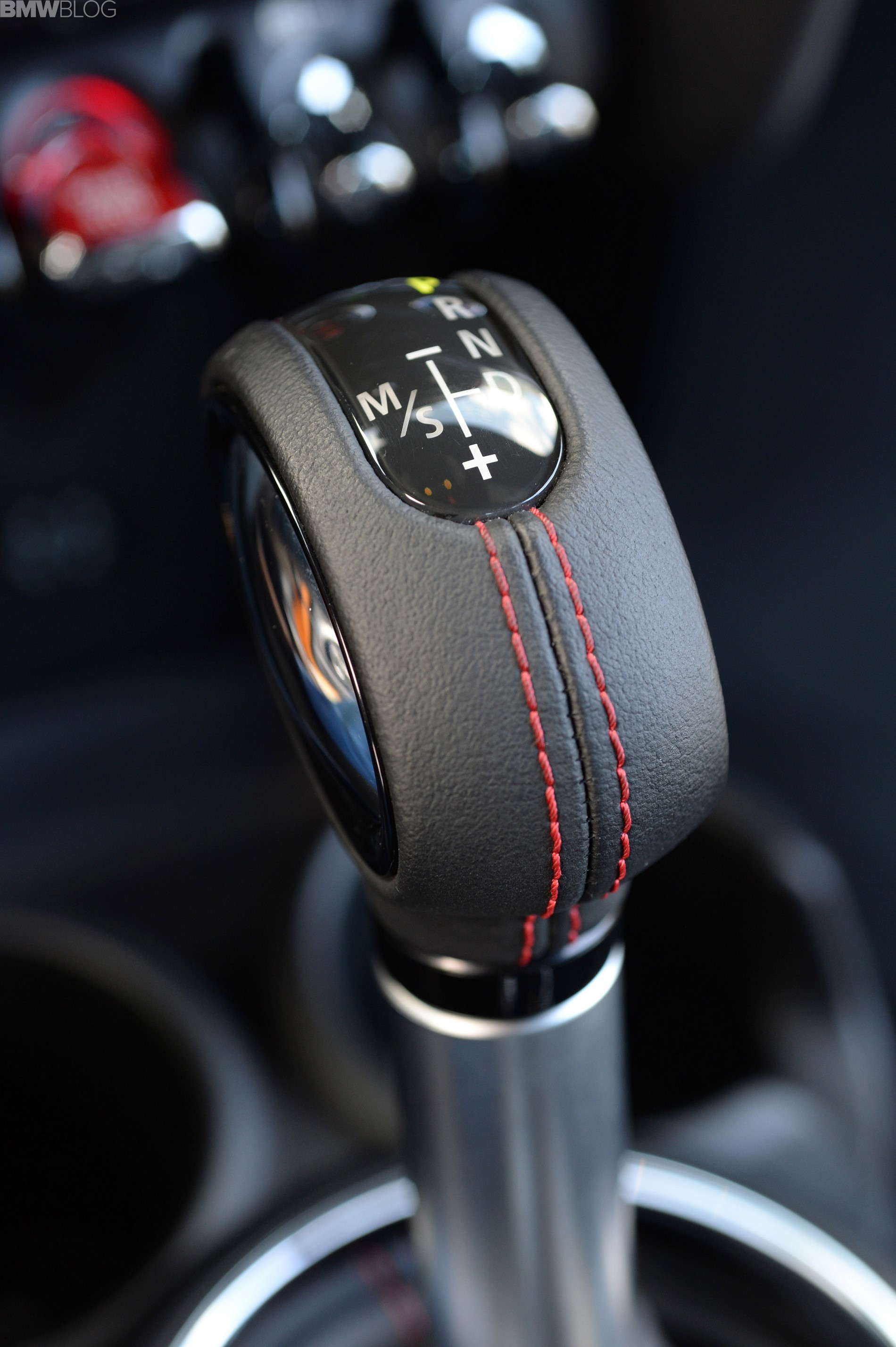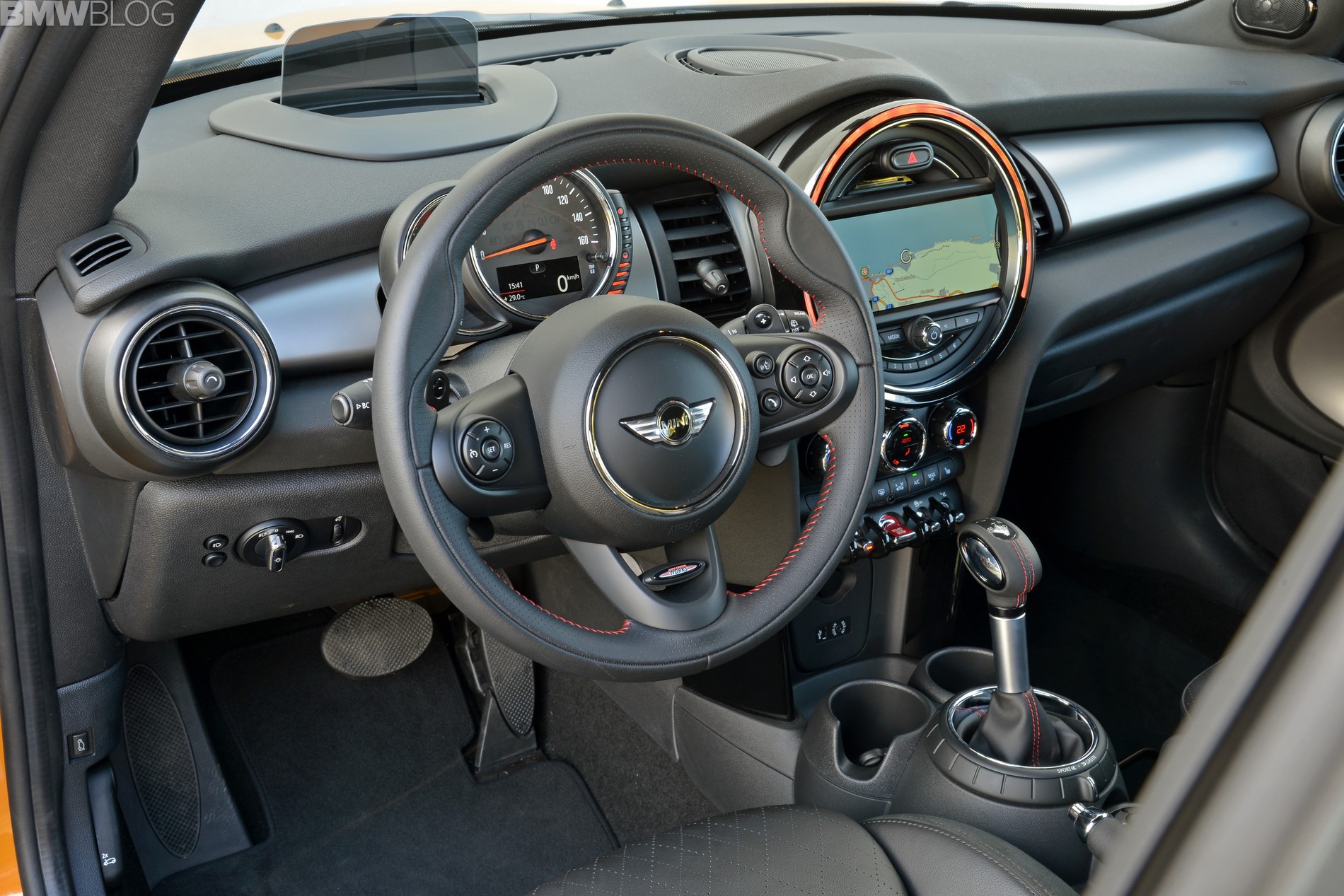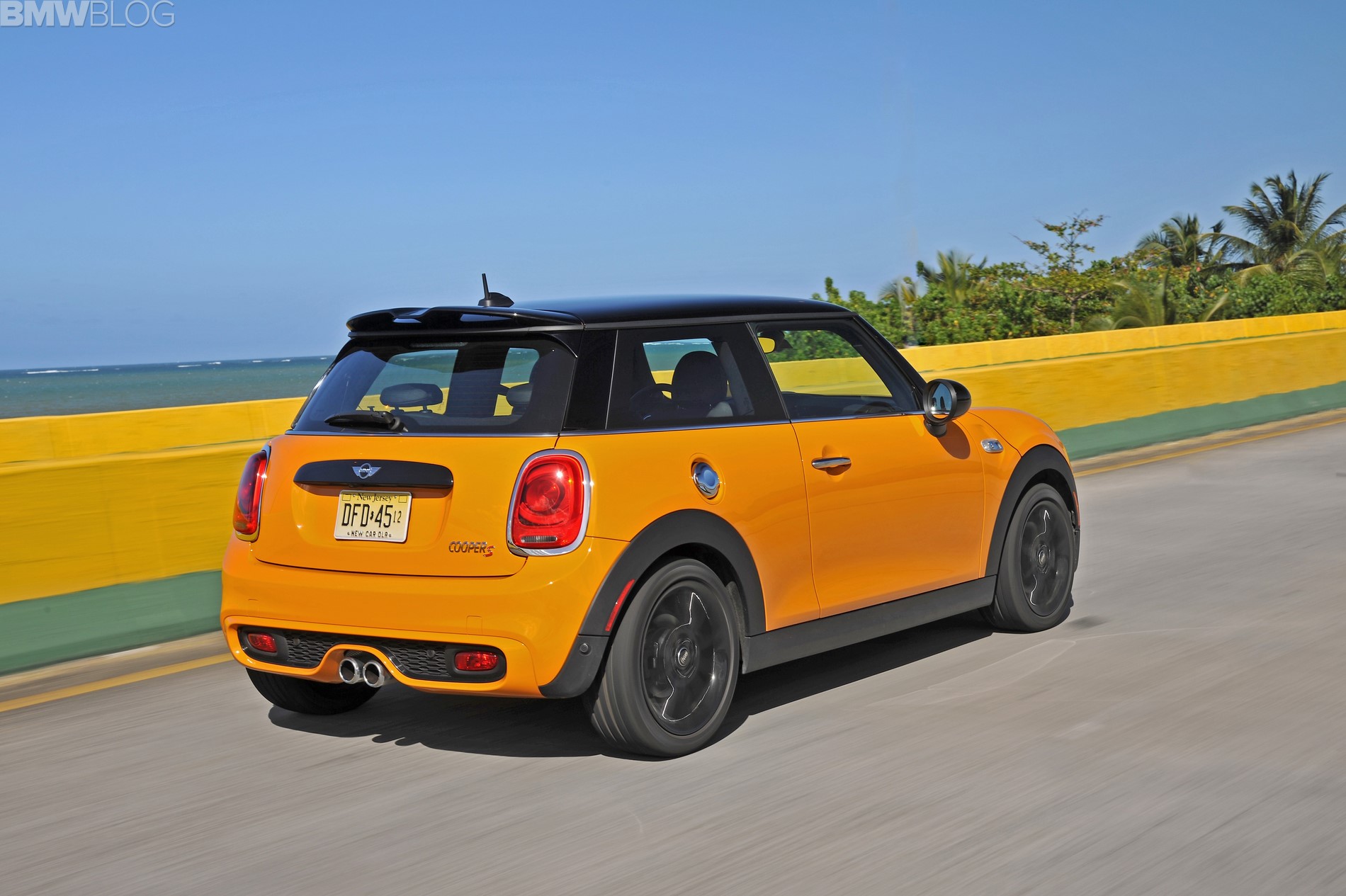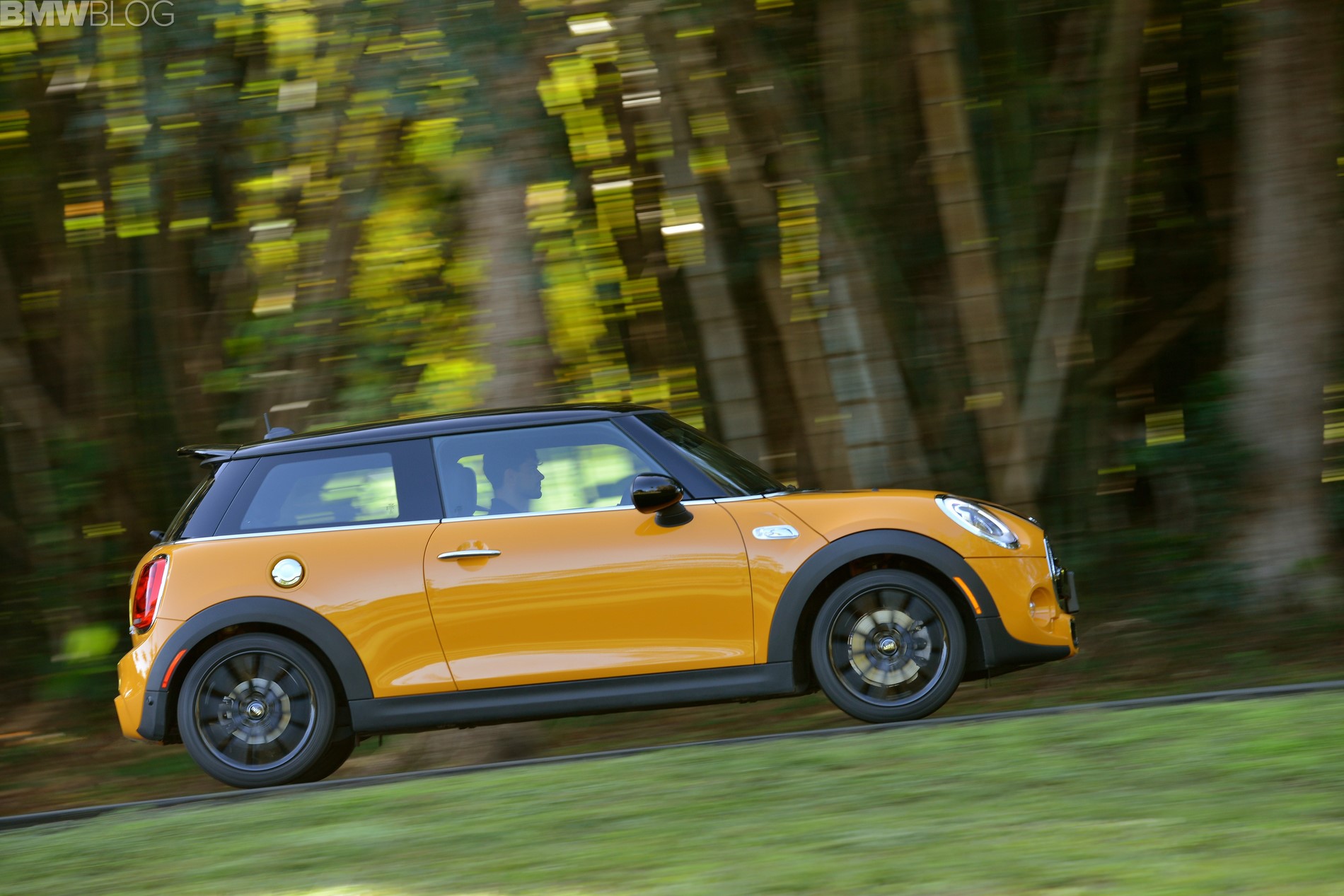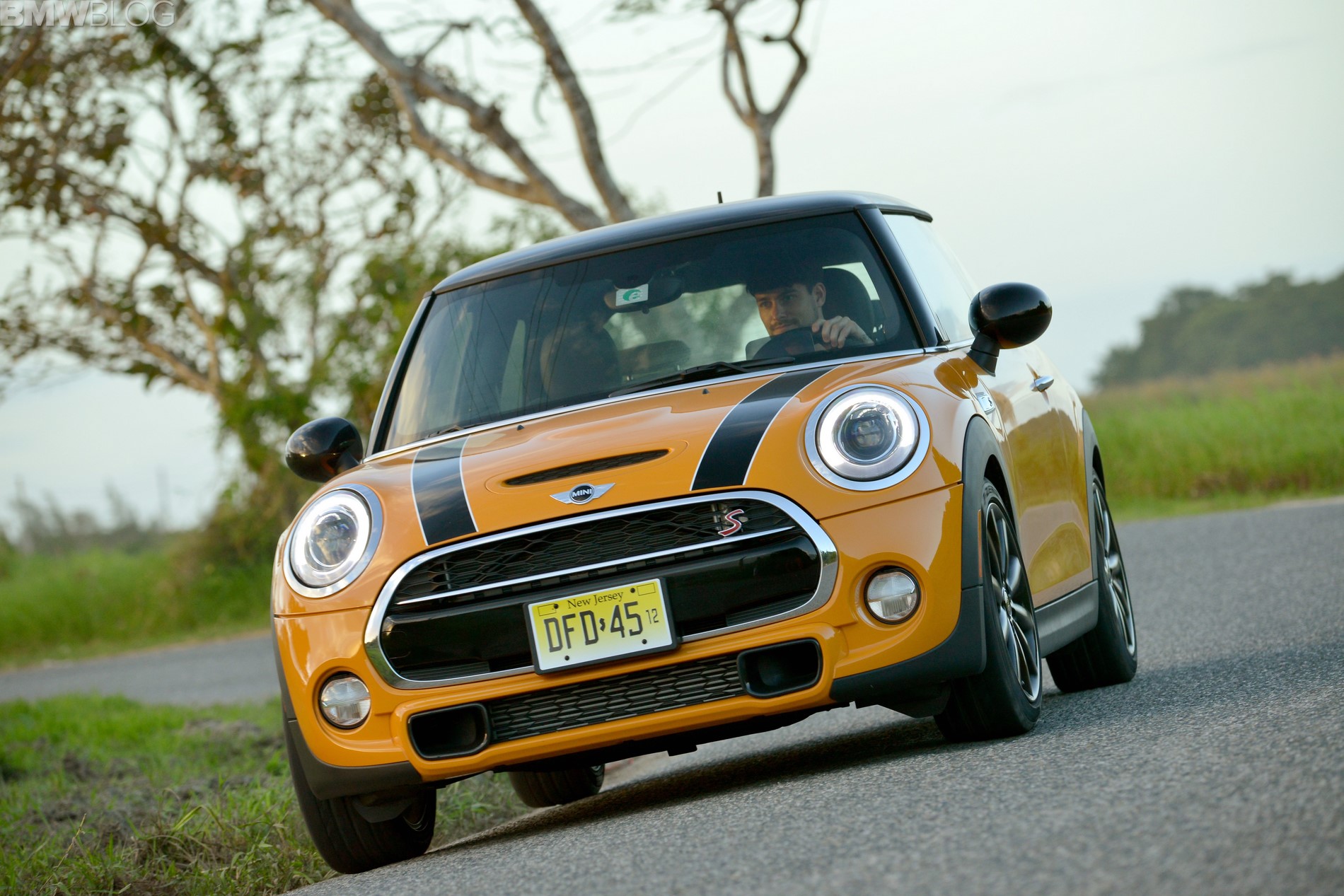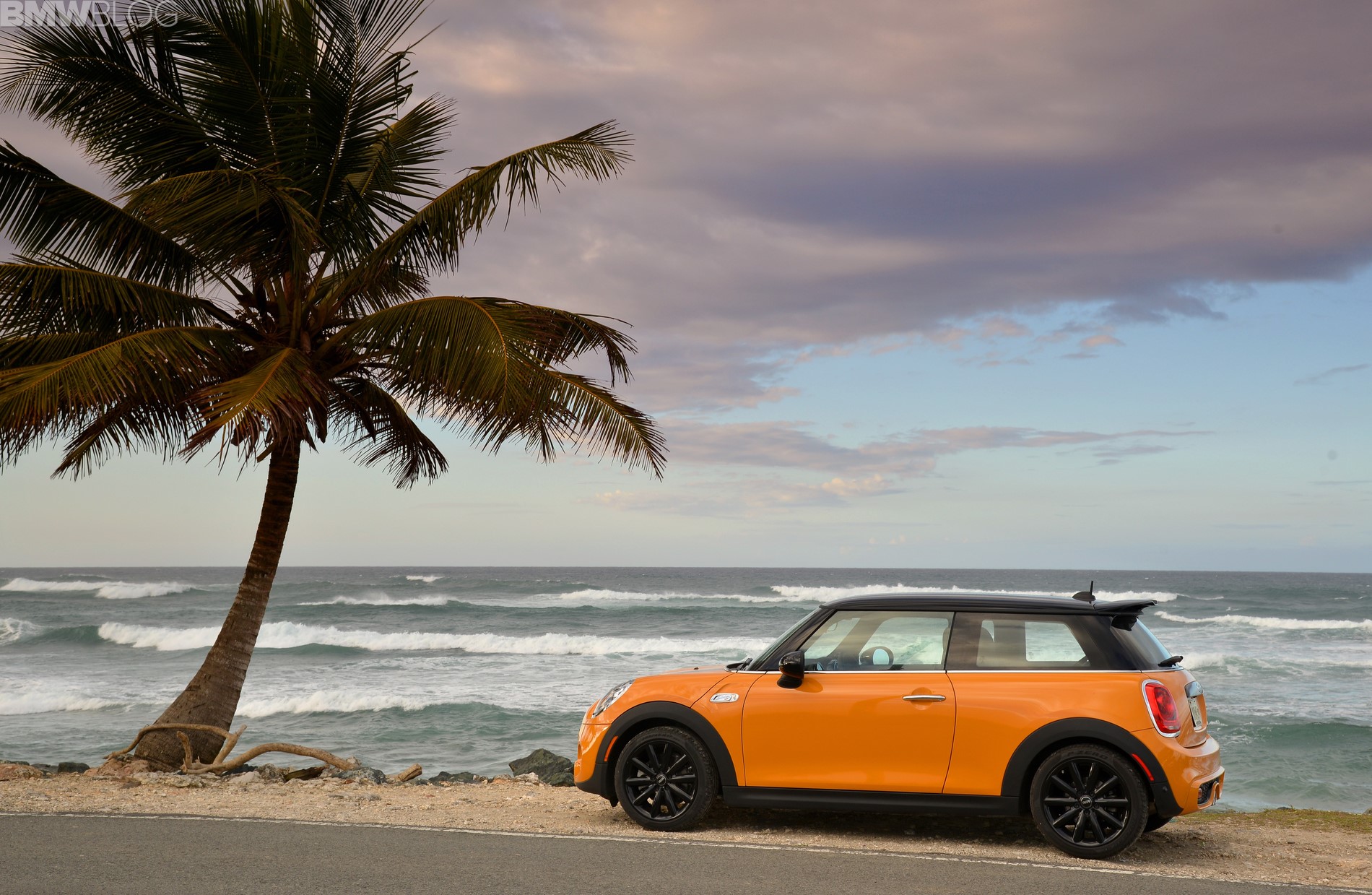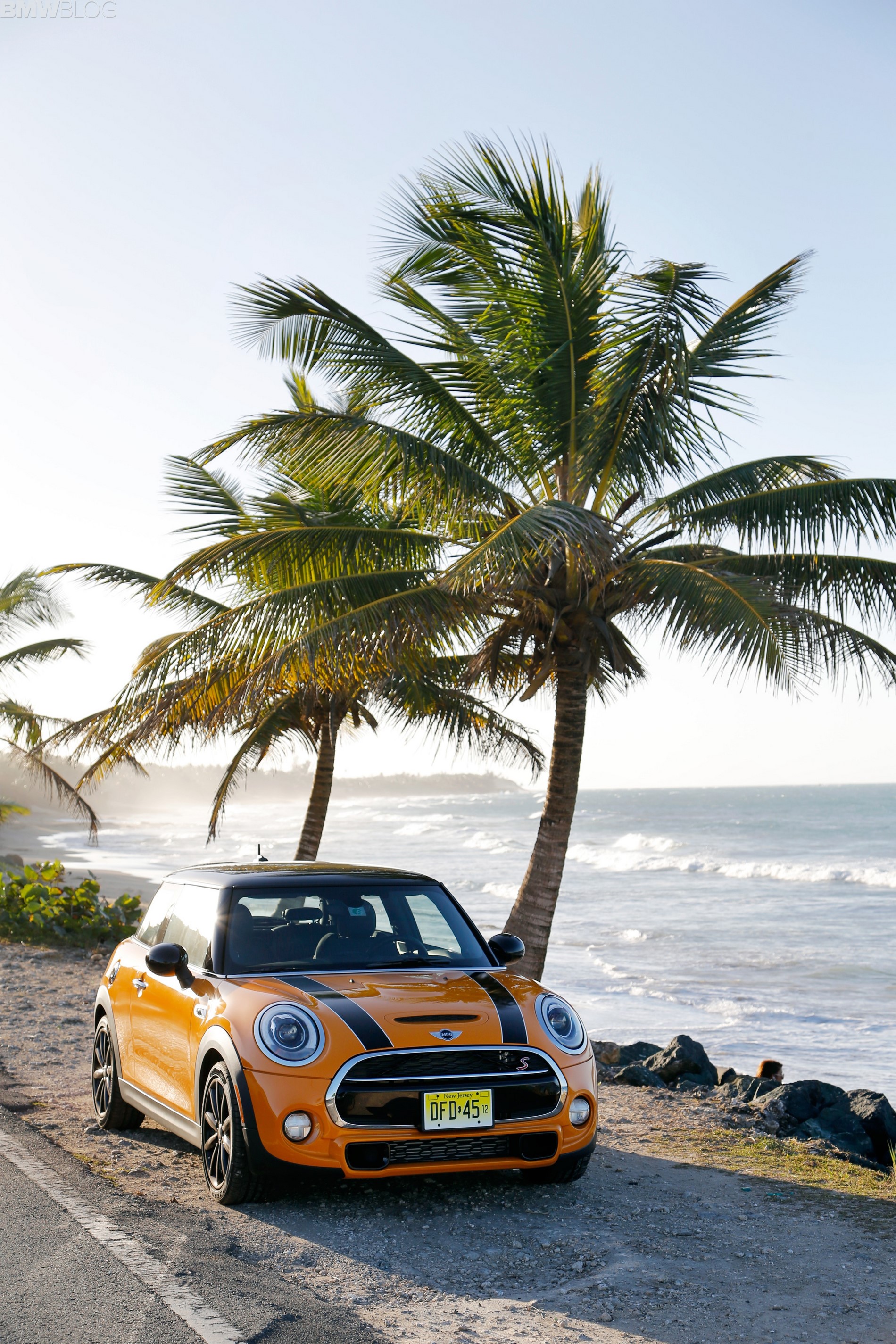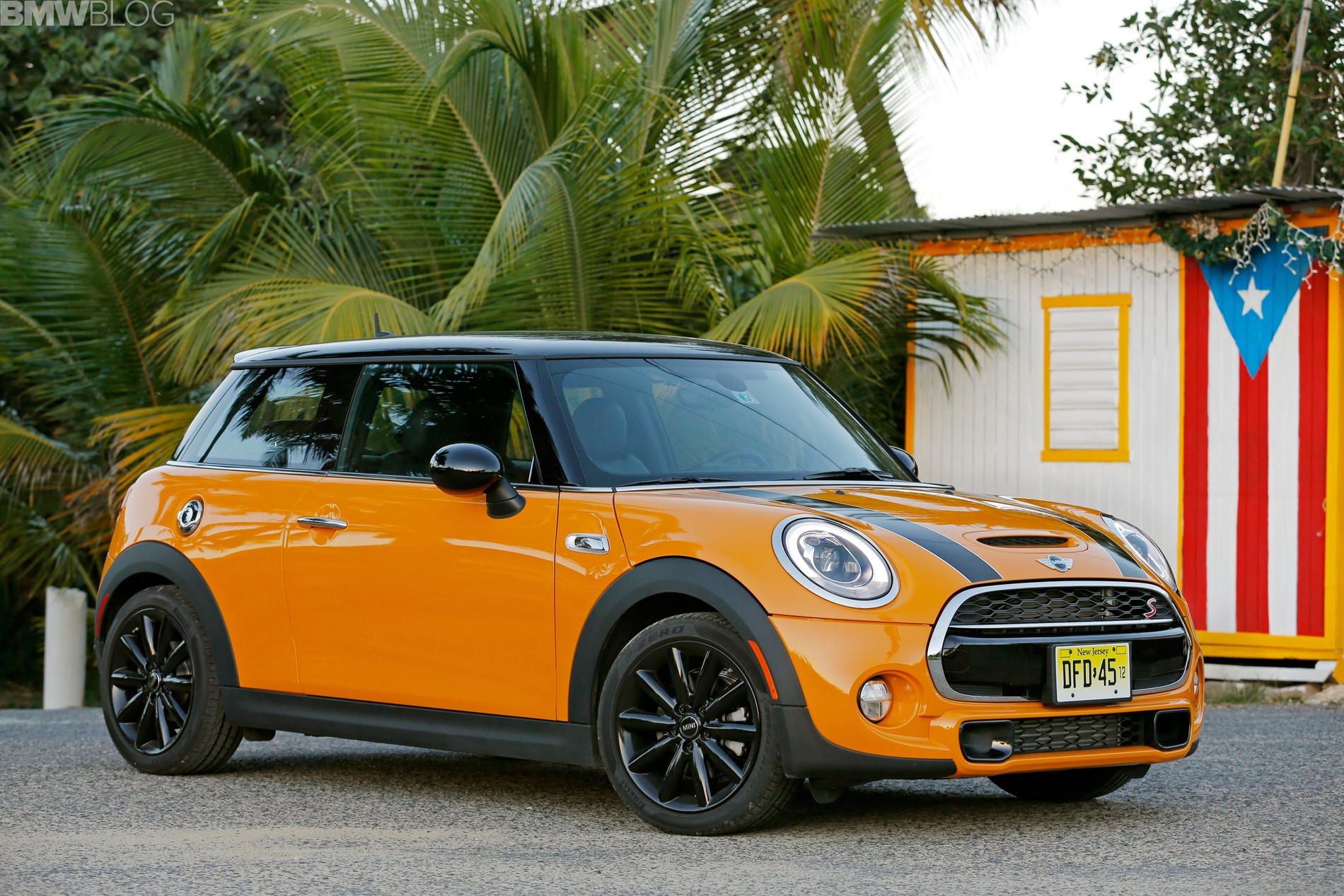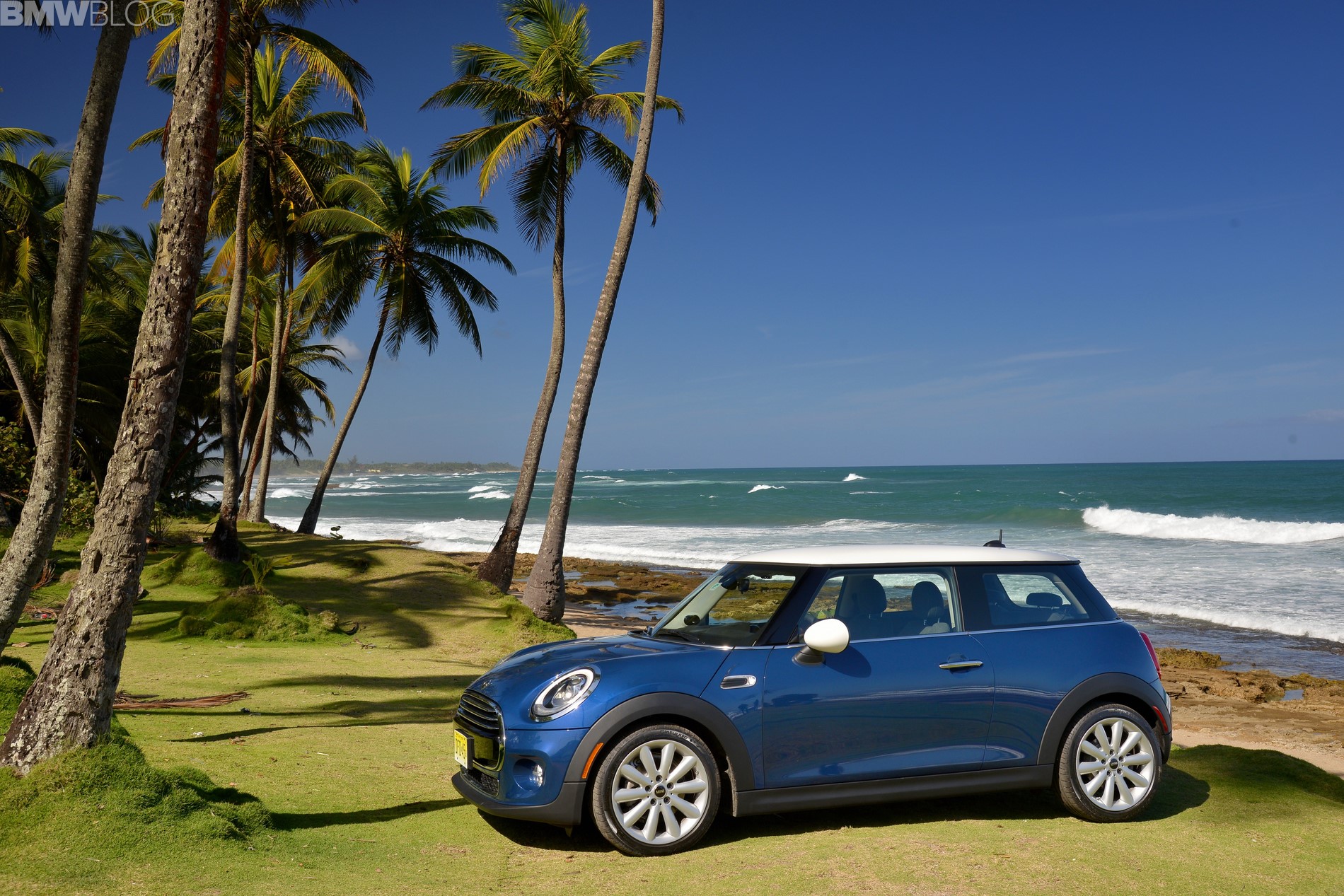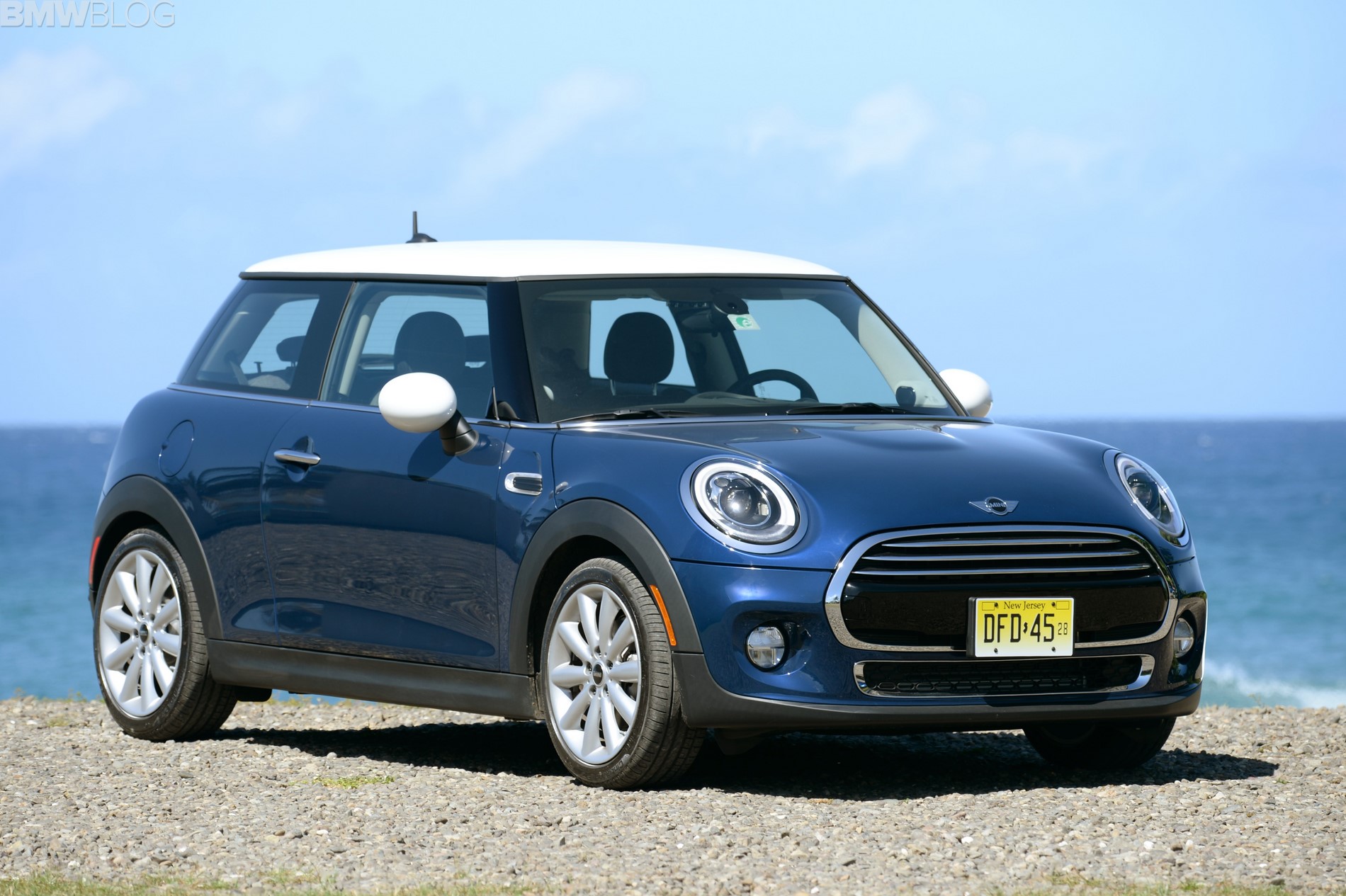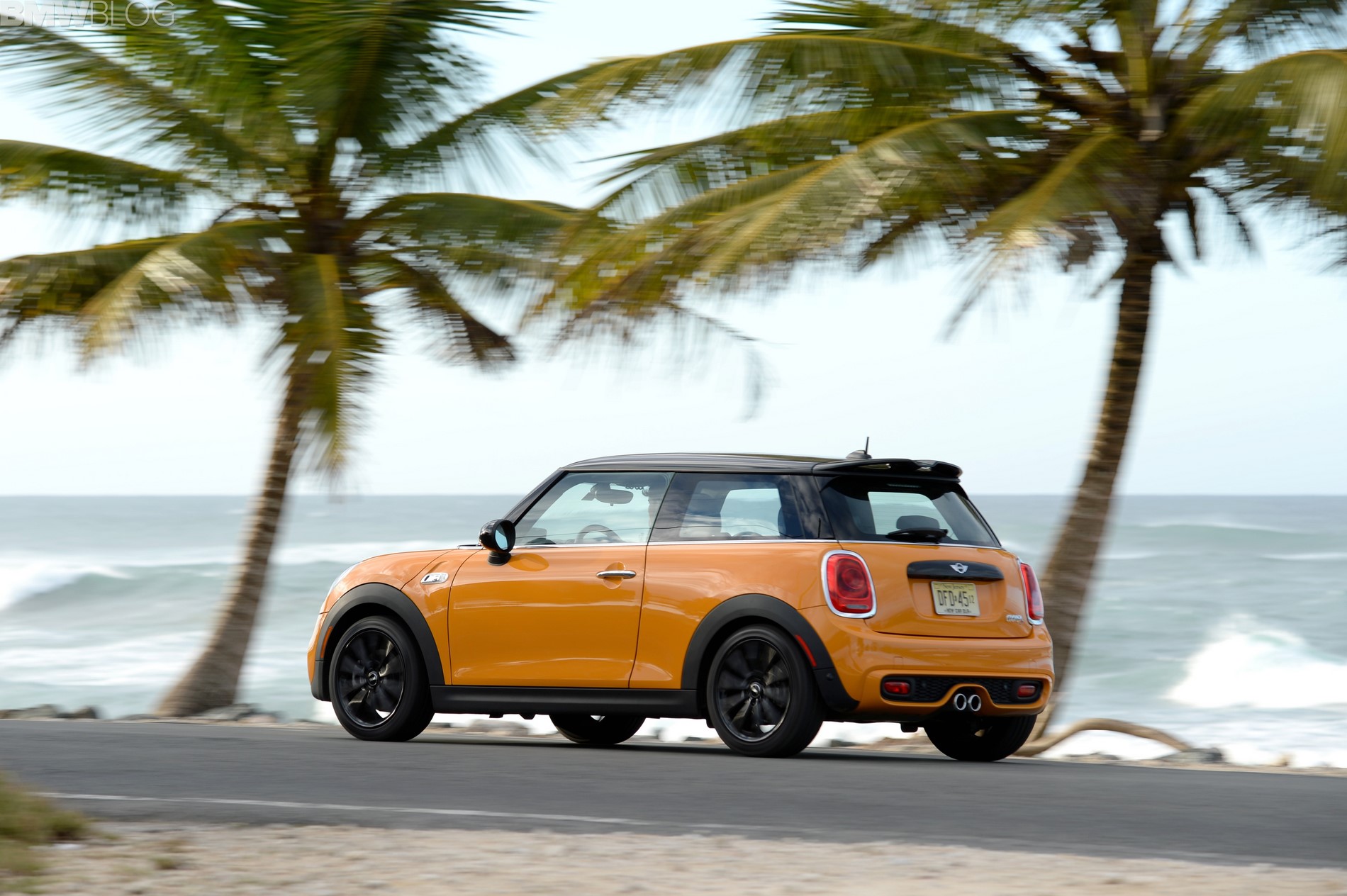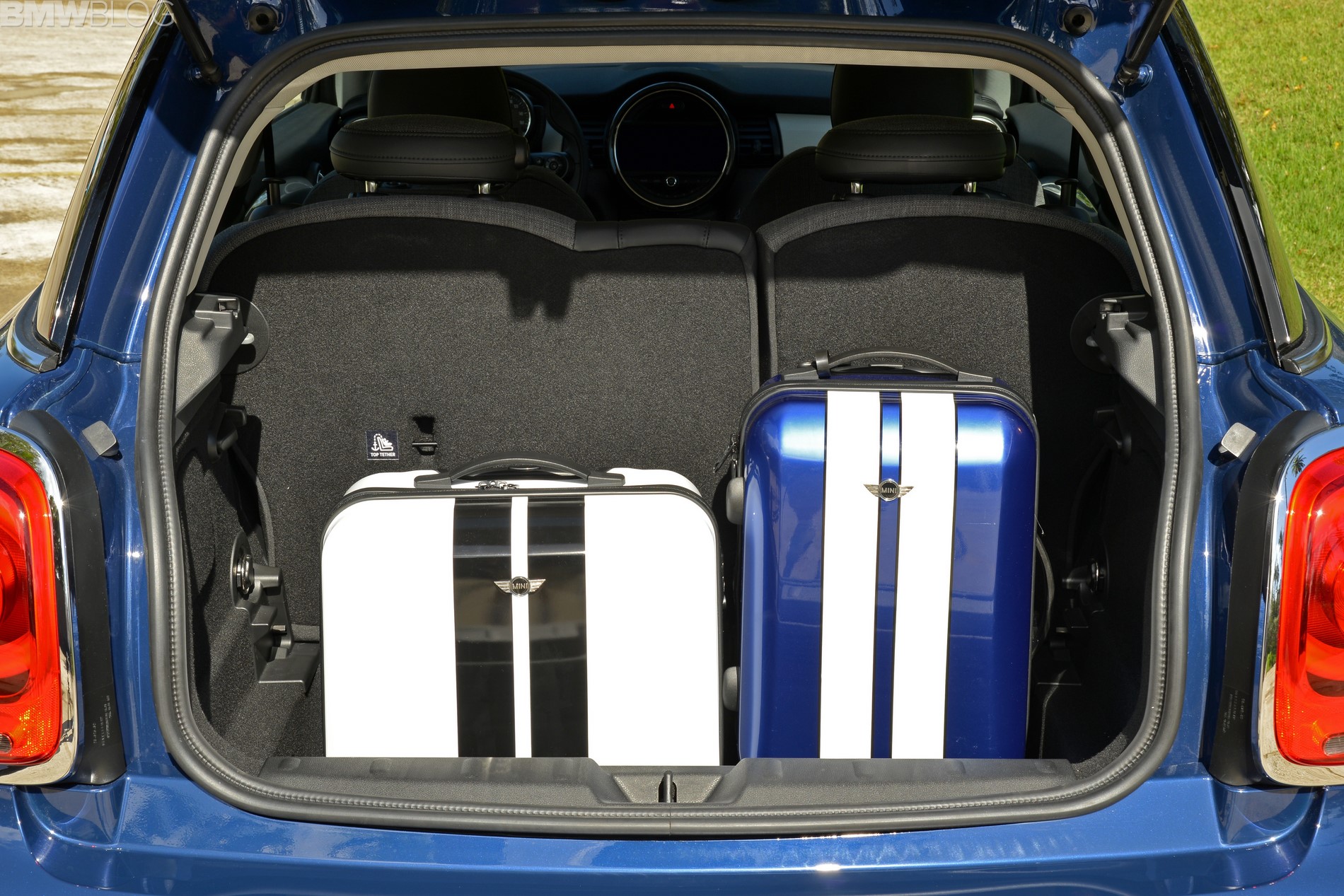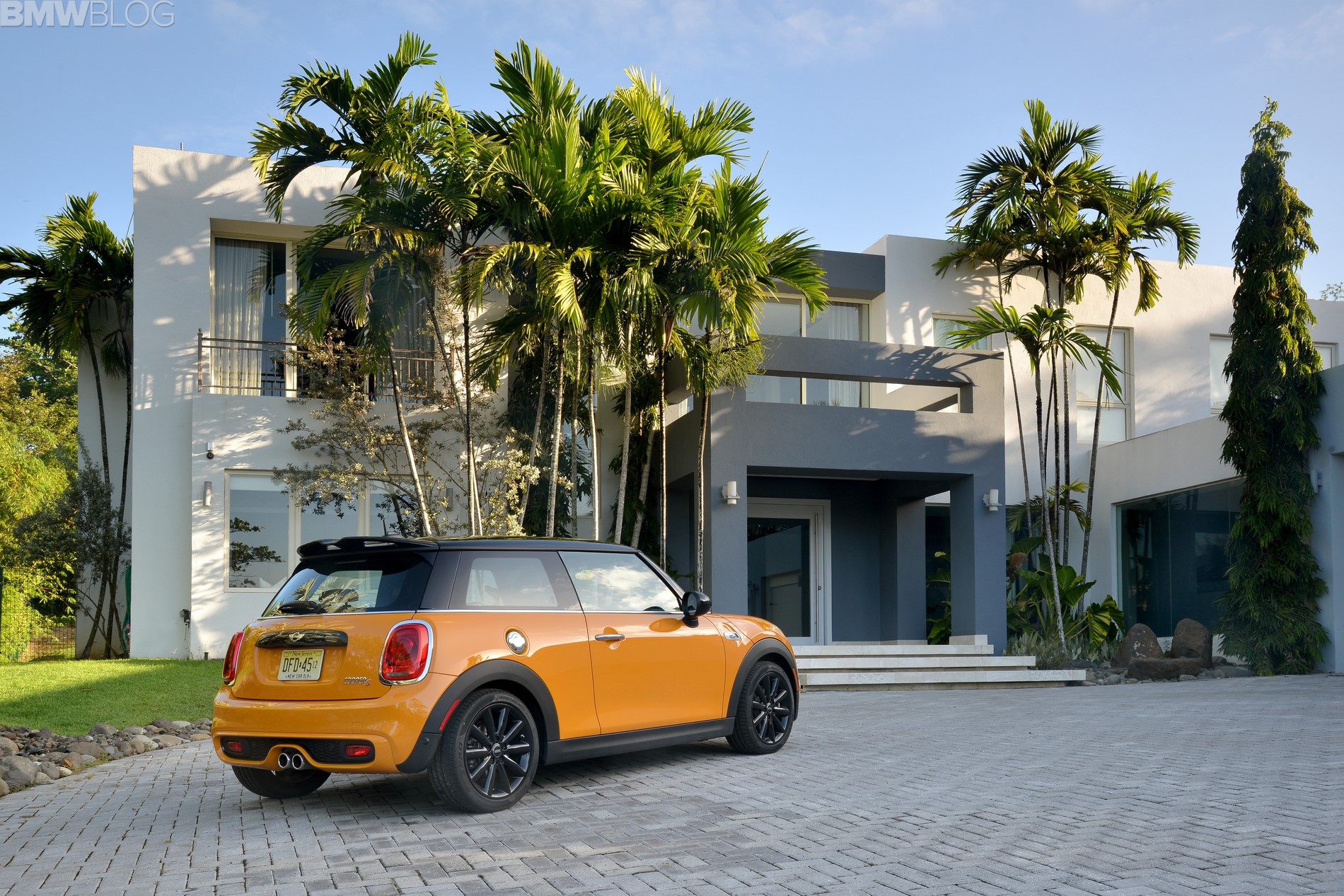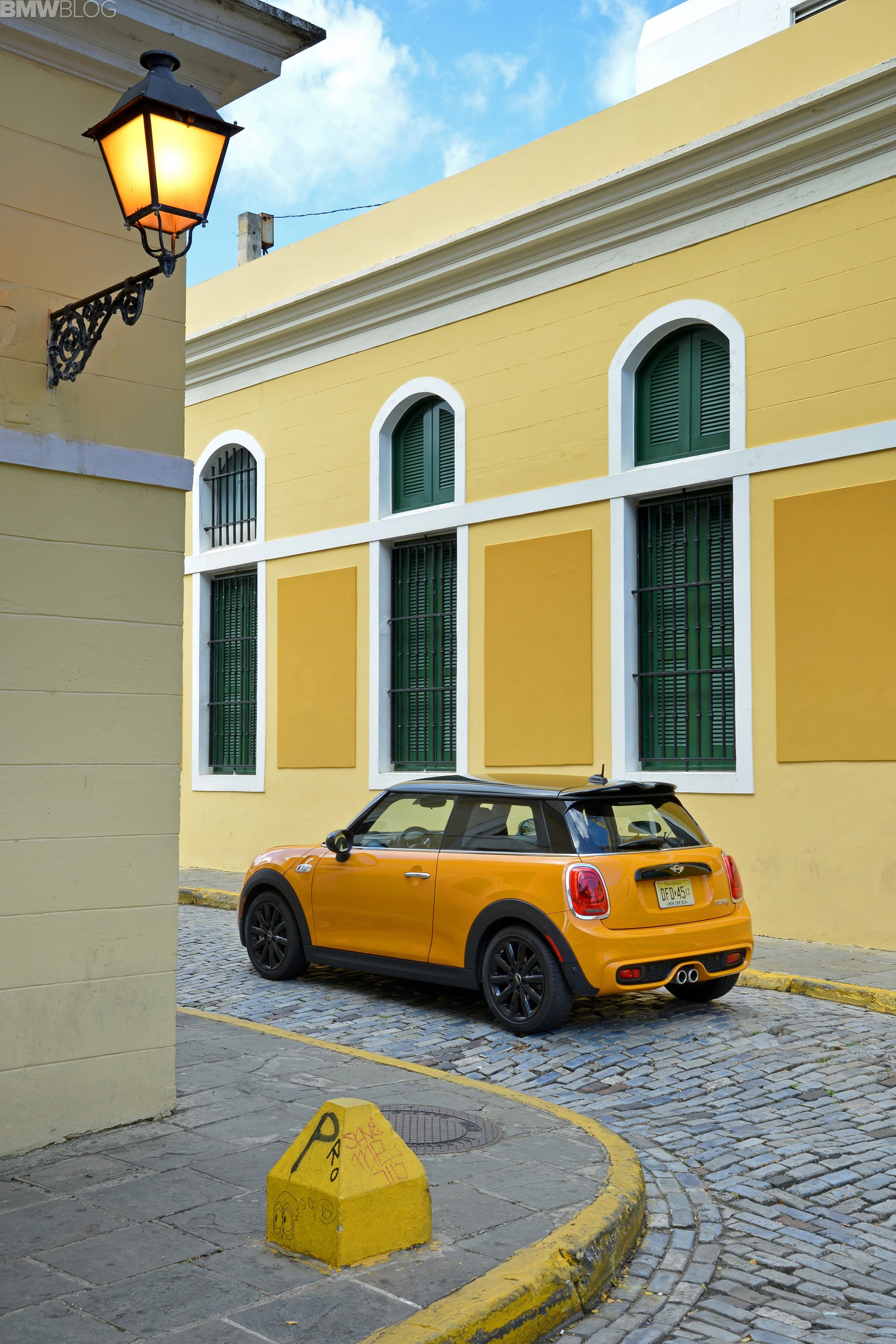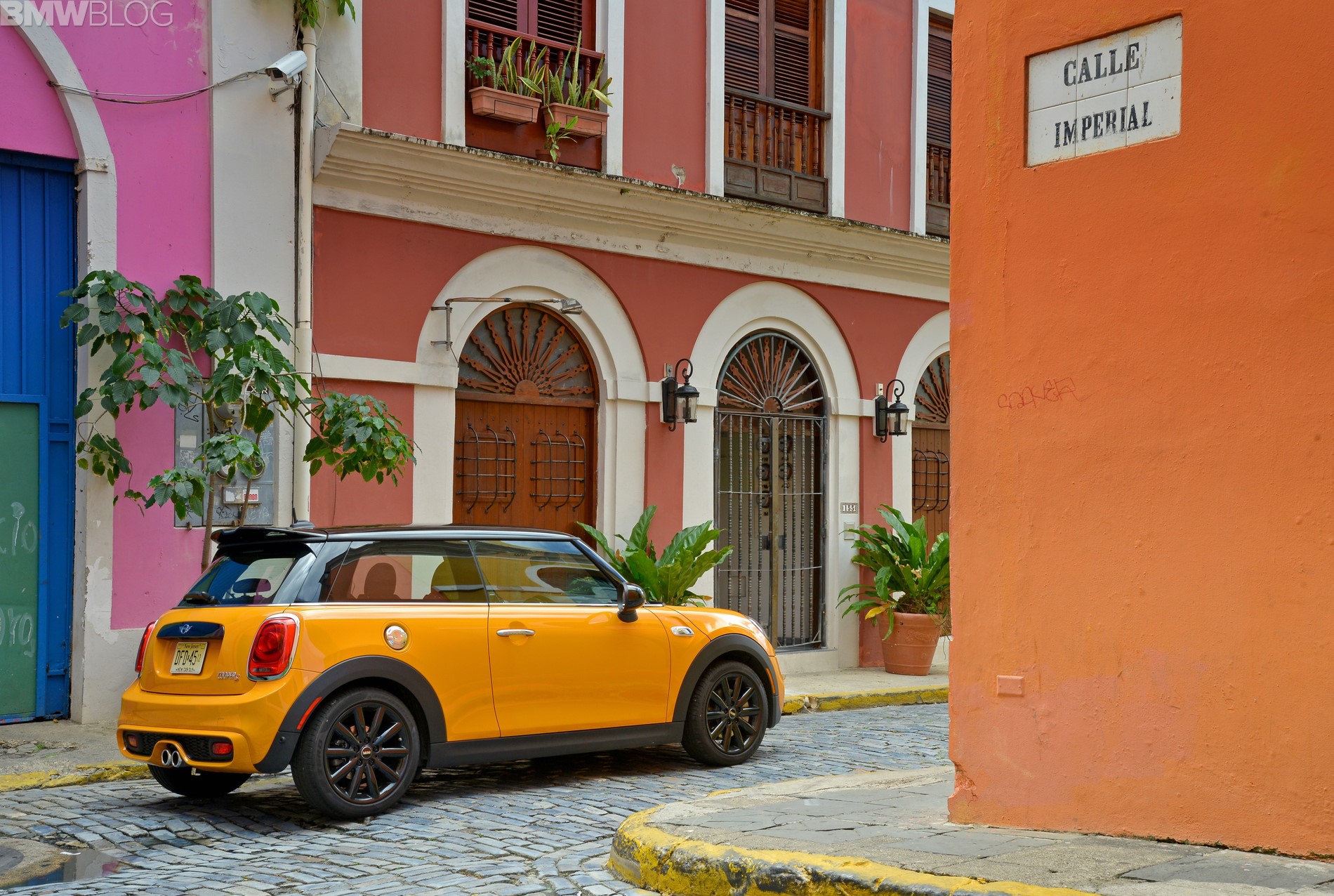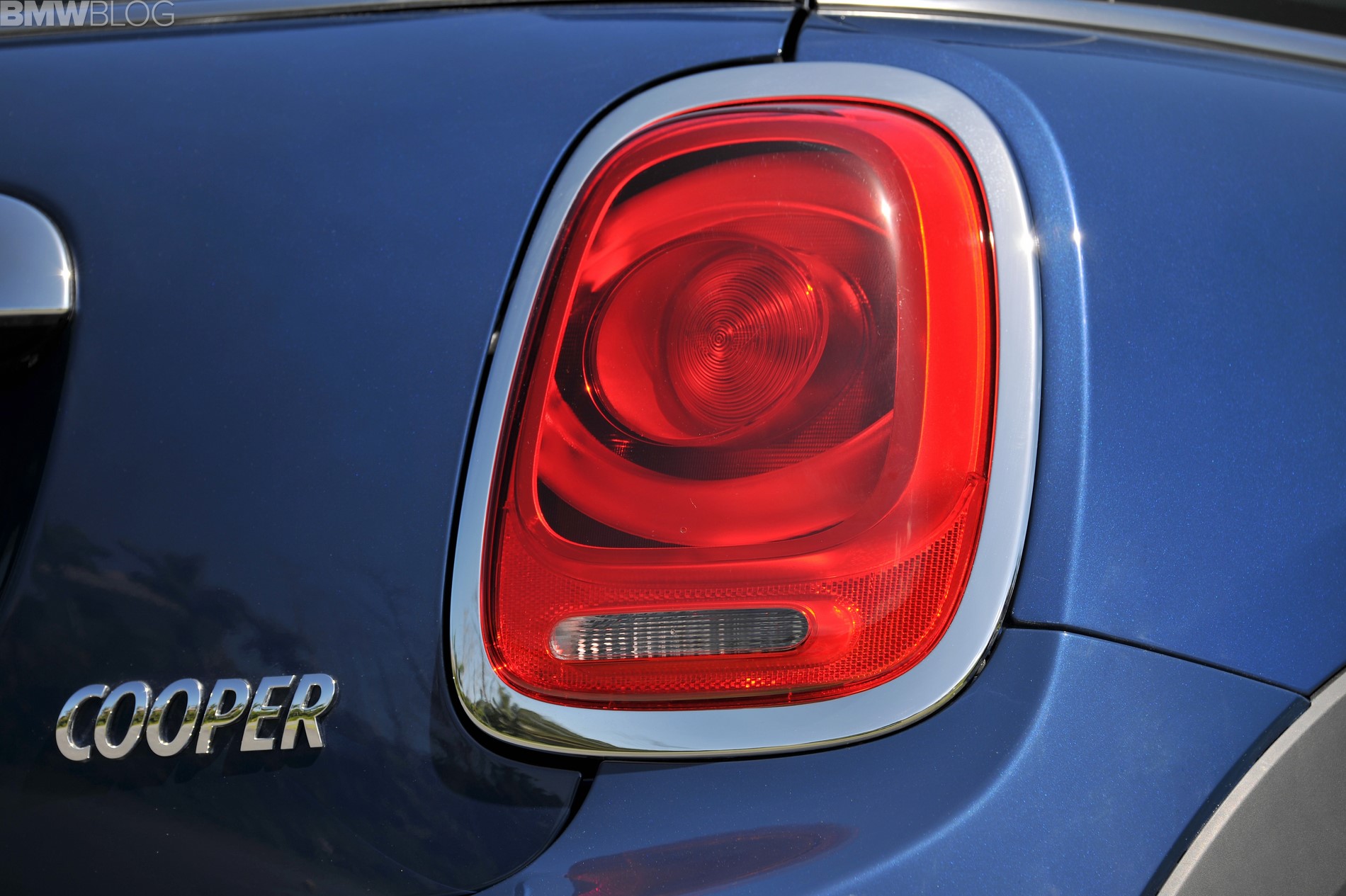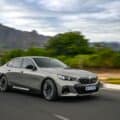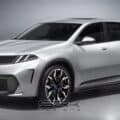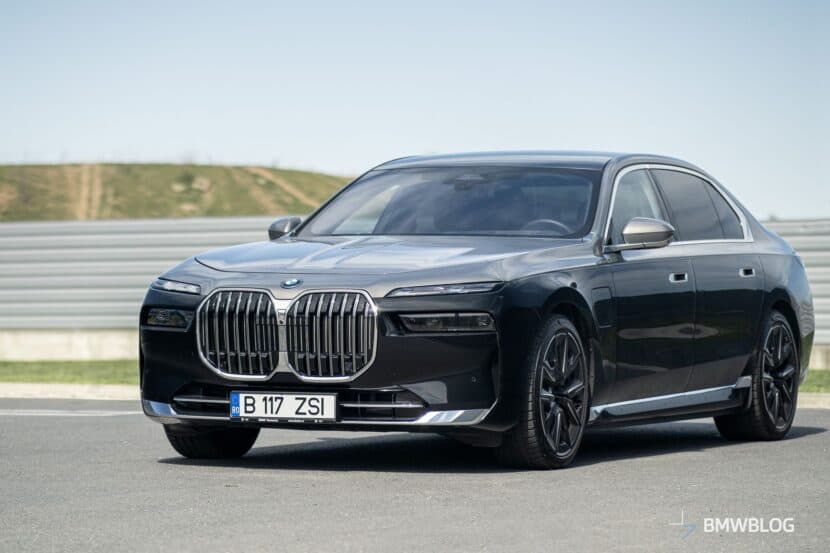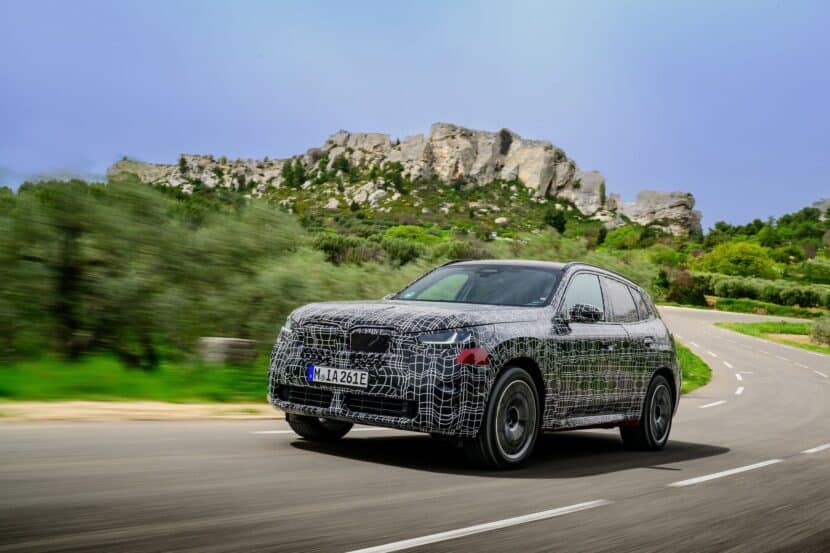BMWBLOG goes to Puerto Rico to test drive the new 2014 MINI Cooper and MINI Cooper S.
How do you update an icon? How do you move the design forward under new safety and fuel economy mandates without alienating the core enthusiasts? MINI Cooper, born new in 2001 under BMW’s ownership, has been a huge success, in fact MINI sold over 305,000 total vehicles last year and the Cooper is their most popular core model.
To see how MINI tackled the difficult task of completely reworking the iconic Cooper, BMWBLOG went to Puerto Rico for the International Press Launch to drive the new 2014 MINI Cooper and MINI Cooper S.
DESIGN
The 2014 F56 MINI Cooper is all-new from the ground up, and yet remains immediately recognizable as a MINI, despite a growth in overall length of 4.5 inches, width by 1.7 inches and just a hair taller, 0.3 inches. The front track grows by 1.7 inches and the rear track is increased by 1.3 inches. In addition to more interior cabin volume, the luggage compartment is now 8.7 cubic feet, a growth of more than 33 percent.
Its famous bull dog stance remains and is typified by MINI’s classic short overhangs. The F56 MINI Cooper maintains its separation of body, greenhouse and roof by the use of black roof support pillars – A, B and C pillars. These remain black regardless of the body color chosen and blend seamlessly into the glass greenhouse. LED Daylight running lights are standard and full LED headlamps are, for the first time, an option. The front grille is a bit larger and more upright compared to the previous generation R56 Cooper. The new MINI’s sheet metal is good for a lower drag coefficient of 0.28. Here is a visual comparison between the outgoing MINI and the new model.
SUSPENSION
For the first time variable dampers via Dynamic Damper Control are available for a mere $500. The DDC allows you to switch from “Green and Sport Modes.” The “green mode” optimizes the car for fuel efficiency by changing shift points and adding a coasting feature in the automatic. The suspension is softer also. Want a stiffer, sportier ride, select “sport mode” and the MINI will be set to its most aggressive capabilities. This stiffens up the ride quite a bit and changes the throttle tip in. During my test drive I found this mode to be harder to smoothly roll on the throttle coming out of tight switchbacks. A small tip in of the throttle resulted in an exaggerated amount of power. Switch to “Mid-mode” for when you want an in-between classic MINI feel that’s about halfway between Green and Sport for a “happy motoring medium.”
The route we drove in Puerto Rico lent itself well to evaluating the suspension. Tight switchbacks, narrow roads through the local mountains with plenty of bumpy roads. There was absolutely no cowl shake. Imperfections were soaked up in, if I dare say, a BMW like manner. In many ways the suspension seems to have grown up and is more mature and composed. It was a pure blast to run it in the mountains trying to keep up with Jorge Koechlin, former Formula 1 driver, turned automotive journalist, who was driving the more powerful Cooper S while I was in the less powerful Cooper .
I would dare say that the three cylinder motor in my test car is broken in now.
Further, I can assure you that the brakes are up to the task because the occasional Ferrel dog would wander out in to the road triggering threshold braking exercises. We did not get to drive on a track so I didn’t have a change rotating the car, but some of the journalists there felt the ride was a little less tossable than the last generation MINI Cooper. In my case, I’m willing to trade that off for the wider track and stability, but I can see why it might bother some hardcore MINI enthusiasts. The electric steering has perhaps less feel but was well weighted and accurate. It’s a very well sorted out chassis which retains that go-kart feel.
ENGINE
The three cylinder motor found under the hood of the new MINI is the first of its kind put in a production car by BMW Group. BMWBLOG had driven the 1.5 liter cylinder engine when it was still undergoing testing and development. We were mightily impressed back then. In the new MINI Cooper, the three cylinder motor is tuned more for fuel economy and the 1.5 liter TwinPower single turbo makes 134 hp and a max 170 ft-lbs. The MINI Cooper is good for a 0-60 time of 7.4 seconds in the manual and 7.3 in the automatic.
The base Cooper we drove was a six-speed manual and though the car didn’t have an abundance of power, the slick shifting six stick was a pure joy to row while keeping up with the other MINI Cooper and Cooper S cars during our test drive. The three pedals are laid out perfectly for heel and toe’ng. The three-cylinder Cooper is rated at 42 mpg.
The sportier Cooper S gets a four-cylinder, 2.0 liter engine that makes 189 hp and a max of 221 ft-lbs of torque. The “S” gets from 0-60 in 6.4 seconds with the automatic and 6.5 seconds with a manual transmission. The Volcanic Orange Cooper S we drove had a six speed Steptronic automatic transmission with paddle shifters. If anything I was more impressed how useable the power coming out of the three cylinder is and somewhat surprised the S model wasn’t more powerful, a sentiment shared by many journalists here.
Both motors use direct fuel injection, variable valve timing and turbocharging in order to be more efficient. Auto Start/Stop is standard but easily disabled should you choose. These motors are so fuel efficient, that I suspect they could erode the market for diesels in the United States. As far as weight goes, the new Cooper weighs 2,605 lbs, while the Cooper S weighs 2,760 lbs. Both up from the last generation Coopers by just under 100 lbs. Brake energy regeneration and energy efficient oil pumps are standard as well.
CABIN TECH
Perhaps the biggest change from the previous MINI is the position of the speedometer and tachometer which are now on the steering column instead of the center rail. The center console is now dedicated to either a standard four line TFT display or a 8.8” color screen that comes with the optional navigation. Both MINIs we drove came with the larger 8.8” navigation screen and iDrive Touch Controller. Rear-end camera and Park Distance Control offer both audible and visual cues to keep you from bumping into anything.
MINI really upped their game by adding a whole slew of new features not usually seen in cars in this market segment. For the first time Head-Up display, Parking Assistance and LED lights are now offered in MINI. To remain true to its roots, the new MINI has to be fun and hipster so there is a new central LED ring surrounding the navigation screen that changes colors depending on the MINI’s mood. When I drove it angry, it would turn red, if I switched it to green mode and wasn’t hammering the car, it would be green or blue. The lightning also can change depending on music.
A big part of the MINI experience is how it makes you feel, so with that being said I found both he Cooper and Cooper S to be an absolute blast to drive and suspect it will sell very well.
Pricing for the 2014 Mini Cooper starts at $19,950 while he 2014 Mini Cooper S has a base MRSP of $23,600. It goes on sale in Spring of 2014.
2015 MINI Cooper Review
Performance - 8
Cabin Space & Comfort - 8
Technology & Connectivity - 9
Ride & Handling - 8
Price & Features - 8
8.2
A big part of the MINI experience is how it makes you feel, so with that being said I found both he Cooper and Cooper S to be an absolute blast to drive and suspect it will sell very well.


